- Newsletters

Site search
- Israel-Hamas war
- Home Planet
- 2024 election
- Supreme Court
- All explainers
- Future Perfect
Filed under:
Travel time is the forgotten breakthrough of the past 200 years
Share this story.
- Share this on Facebook
- Share this on Twitter
- Share this on Reddit
- Share All sharing options
Share All sharing options for: Travel time is the forgotten breakthrough of the past 200 years
The classic Atlas of the Historical Geography of the United States shows exactly how travel times across the United States have evolved over time. Back in the early 1800s, without easily navigable roads or railroads, even a journey from New York to Washington, DC, was a multi-day affair.
:no_upscale()/cdn.vox-cdn.com/uploads/chorus_asset/file/3491184/travel18001830.0.jpg)
Map of travel times in 1800 and 1830. ( Hathi Trust )
Over time, that slowly improved. Construction on the National Road , which stretched from Cumberland, Maryland, across the United States, began in 1811 and continued through the 1830s. The advent of the steamboat also made it easier to use rivers.
The big advance, however, came through trains. By 1857, railroads had improved travel times significantly — culminating with the development of the Transcontinental Railroad in 1869. Even in 1857, travel was easier, thanks to the railroad system.
:no_upscale()/cdn.vox-cdn.com/uploads/chorus_asset/file/3491188/travel1857.0.jpg)
Map of travel times in 1857. ( Hathi Trust )
By 1930, railroads had successfully compressed travel times to a couple of days versus the many weeks it took in the 1800s.
:no_upscale()/cdn.vox-cdn.com/uploads/chorus_asset/file/3491192/railroads1930.0.jpg)
Map of railroad travel times in 1930. ( Hathi Trust )
These maps don't just show the rapid pace of technological progress, however. They also show how that progress advanced unevenly, in fits and starts. Railroads didn't reduce travel times right away — they still required significant infrastructure investments, ranging from laying down tracks to building tunnels. That took decades.
The same thing happened to airline travel. This map of air travel times in the 1930 shows it was a huge advance on railroads. But it was still significantly slower than air travel is today:
:no_upscale()/cdn.vox-cdn.com/uploads/chorus_asset/file/3491194/airlines1930.0.jpg)
Map of airline travel times in 1930. ( Hathi Trust )
Travel times may get shorter still. But a faster plane or train isn't enough to change it — the infrastructure has to be able to handle whatever invention comes along next.
Will you support Vox today?
We believe that everyone deserves to understand the world that they live in. That kind of knowledge helps create better citizens, neighbors, friends, parents, and stewards of this planet. Producing deeply researched, explanatory journalism takes resources. You can support this mission by making a financial gift to Vox today. Will you join us?
We accept credit card, Apple Pay, and Google Pay. You can also contribute via
Next Up In Life
Sign up for the newsletter today, explained.
Understand the world with a daily explainer plus the most compelling stories of the day.
Thanks for signing up!
Check your inbox for a welcome email.
Oops. Something went wrong. Please enter a valid email and try again.

Israel’s other war

What we know about the police killing of Black Air Force member Roger Fortson

Inside the bombshell scandal that prompted two Miss USAs to step down

How to listen to Today, Explained on the radio

Macklemore’s anthem for Gaza is a rarity: A protest song in an era of apolitical music

Eurovision is supposed to be fun and silly. This year is different.
Driving Cross Country: How Long Does It Take for a Road Trip Across America?
by Editorial Team
Published on 19 Feb 2023
1. The Northern Route
2. the middle-america route, 3. the panhandle crossing, 4. the southern route.
It takes 4 to 6 days for a road trip across America driving 8 or more hours per day. You will drive approximately 2,500 to 3,500 miles. So with several days to spare, you can see the country from the Atlantic coast to the Pacific.
It all depends on which part of the country you'd like to see and how many days you're able to stay on the road during . You can drive longer days to speed up your cross-country road trip or draw out the trip to enjoy copious Americana along the way.
Whatever route and time-frame you opt for, driving cross country promises to be an unforgettable adventure on the road.
Depending on your route, the coast-to-coast drive across America ranges in distance from approximately 2,500 to 3,500 miles. If you're prepared to clock eight-plus hours behind the wheel per day, the shortest route should takes four days and the longest six.
Hugging the northern end of the United States takes the longest of any of the cross-country routes. Not only is this is the widest point of the country, but your driving route must steer under the Great Lakes.
If you start at Houlton, Maine, at the border with New Brunswick, Canada, with Pacific Beach State Park in Washington state as your final destination, the trip is just over 3,500 miles and clocks in at 51 hours.
Breaking it down into six driving days of a little over eight hours each, you should plan for five nightly stops before reaching the Pacific.
With few large cities along the middle portion of this route, traffic congestion is rarely a concern. Places where you might want to spend more time at along the way include Lake Erie and Chicago, home of world-class museums and gleaming skyscrapers.
Continue to Theodore Roosevelt National Park in North Dakota, a stunning place where the landscape shifts from the Great Plains to the Badlands.
Another great geographical shift comes when you reach the northern Rockies in western Montana, and even later you'll sense the transition to the Pacific Northwest at Ginkgo Petrified Forest State Park in Washington.
Taking you from an East Coast landmark to a West Coast icon, the Washington, D.C., to San Francisco route cuts through America's heartland with unforgettable stops along the way.
At slightly over 2,800 miles, you could break down this 40-hour trip into five eight-hour driving days with four overnight stops.
Beware of accelerating this timeline too much through open stretches in Nebraska, Wyoming and Nevada, where you can feel the effects of fatigue behind the wheel.
This route has been dubbed " the loneliest road " for its long stretches across sparsely populated farmlands and deserts. Departing the District and heading up toward Chicago, Interstate 80 gives you options to stop over in cities such as Des Moines, Iowa, Omaha, Nebraska, and Cheyenne, Wyoming.
Be sure to catch a magnificent Wyoming sunrise or sunset over the plains before heading toward Utah, where you can stretch your legs on nearby ski slopes or explore the Great Salt Lake.
Stop in Reno for slots, buffet and budget luxury before heading toward the City by the Bay.
If you're angling to take in some of the southern sights or you don't want to risk a northern journey that could be jolted by unpredictable winter storms, try starting along the Atlantic coast in Charleston, South Carolina, and hooking up with Interstate 40 toward Los Angeles.
At just under 2,500 miles, the trip clocks in at 36 hours.
Figure four driving days of nine hours and three overnight stops before reaching the City of Angels, but consider stretching out this trip because of all the tourist draws along the route.
The route sweeps through Augusta and Atlanta in Georgia and Birmingham, Alabama, before bending up toward Memphis, Tennessee, and passing through Little Rock, Arkansas.
From Oklahoma City, you'll find the shortest way to cut across Texas: the Panhandle.
Pull off in Albuquerque to experience rich New Mexican culture and find yourself itching for a Grand Canyon detour from Flagstaff, Arizona. Cool off at Lake Havasu before finding the Pacific Ocean past the Mojave Desert.
From New Mexico to California you can follow the historic Route 66, ending your drive across America in style at the storied route's western terminus at the Santa Monica Pier.
Expect notoriously congested L.A. traffic to slow down the final hours of your journey.
Start at the southern tip of Florida and head toward the bottom corner of California while busting through bayou country with a Miami-to-San Diego trip.
Interstate 10 is your friend on this journey, which will put about 2,650 miles on your odometer and take about 37 hours.
Count on four to five days for the trip, depending on whether you want to drive more than nine hours or more than seven hours each day, respectively.
Be sure to get your car's a/c tuned up before setting off along this sun-drenched southern route.
Come up through Florida and hug the Gulf Coast with a slight detour into New Orleans for some French Quarter vivre before heading toward Houston.
Mind your fatigue behind the wheel on the drive through Texas, especially the lonely West Texas stretch after San Antonio. Indulge in Mexican culture at the border stop Ciudad Juarez on your way into New Mexico and across the stunning deserts of the American Southwest.
Parallel the border on Interstate 8 to hit your seaside destination.
- History Classics
- Your Profile
- Find History on Facebook (Opens in a new window)
- Find History on Twitter (Opens in a new window)
- Find History on YouTube (Opens in a new window)
- Find History on Instagram (Opens in a new window)
- Find History on TikTok (Opens in a new window)
- This Day In History
- History Podcasts
- History Vault
This Day In History : June 4
Changing the day will navigate the page to that given day in history. You can navigate days by using left and right arrows
Express train crosses the nation in 83 hours

A mere 83 hours after leaving New York City , the Transcontinental Express train arrives in San Francisco .
That any human being could travel across the entire nation in less than four days was inconceivable to previous generations of Americans. During the early 19th century, when Thomas Jefferson first dreamed of an American nation stretching from “sea to shining sea,” it took the president 10 days to travel the 225 miles from Monticello to Philadelphia via carriage. Even with frequent changing of horses, the 100-mile journey from New York to Philadelphia demanded two days hard travel in a light stagecoach. At such speeds, the coasts of the continent-wide American nation were months apart. How could such a vast country ever hope to remain united?
As early as 1802, Jefferson had some glimmer of an answer. “The introduction of so powerful an agent as steam,” he predicted, “[to a carriage on wheels] will make a great change in the situation of man.” Though Jefferson never saw a train in his lifetime, he had glimpsed the future with the idea. Within half a century, America would have more railroads than any other nation in the world. By 1869, the first transcontinental line linking the coasts was completed. Suddenly, a journey that had previously taken months using horses could be made in less than a week.
Five days after the transcontinental railroad was completed, daily passenger service over the rails began. The speed and comfort offered by rail travel was so astonishing that many Americans could scarcely believe it, and popular magazines wrote glowing accounts of the amazing journey. For the wealthy, a trip on the transcontinental railroad was a luxurious experience. First-class passengers rode in beautifully appointed cars with plush velvet seats that converted into snug sleeping berths. The finer amenities included steam heat, fresh linen daily and gracious porters who catered to their every whim. For an extra $4 a day, the wealthy traveler could opt to take the weekly Pacific Hotel Express, which offered first-class dining on board. As one happy passenger wrote, “The rarest and richest of all my journeying through life is this three-thousand miles by rail.”
The trip was a good deal less speedy and comfortable for passengers unwilling or unable to pay the premium fares. Whereas most of the first-class passengers traveled the transcontinental line for business or pleasure, the third-class occupants were often emigrants hoping to make a new start in the West. A third-class ticket could be purchased for only $40–less than half the price of the first-class fare. At this low rate, the traveler received no luxuries. Their cars, fitted with rows of narrow wooden benches, were congested, noisy and uncomfortable. The railroad often attached the coach cars to freight cars that were constantly shunted aside to make way for the express trains. Consequently, the third-class traveler’s journey west might take 10 or more days. Even under these trying conditions, few travelers complained. Even 10 days spent sitting on a hard bench seat was preferable to six months walking alongside a Conestoga wagon on the Oregon Trail .
Railroad promotions, however, naturally focused on the speedy express trains. The arrival of the Transcontinental Express train in San Francisco on this day in 1876 was widely celebrated in the newspapers and magazines of the day. With this new express service, a businessman could leave New York City on Monday morning, spend 83 hours in relaxing comfort, and arrive refreshed and ready for work in San Francisco by Thursday evening. The powerful agent of steam had effectively shrunk a vast nation to a manageable size.
Also on This Day in History June | 4
The u-505, a submarine from hitler’s deadly fleet, is captured, martha stewart indicted for securities fraud and obstruction of justice.
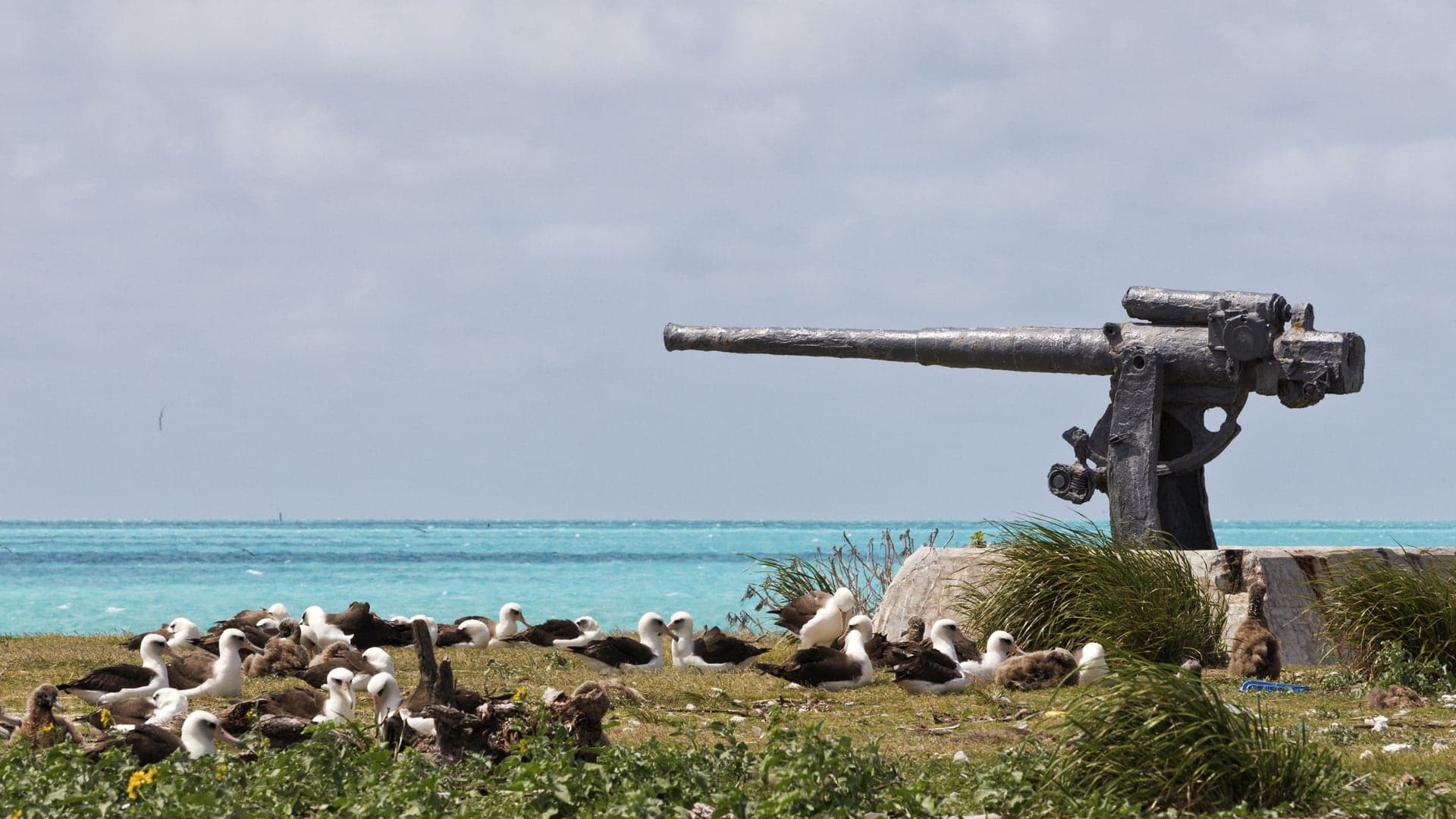
This Day in History Video: What Happened on June 4
Four dozen people witness historic sex pistols set, operation dynamo at dunkirk ends, congress passes the 19th amendment, giving women the right to vote.

Wake Up to This Day in History
Sign up now to learn about This Day in History straight from your inbox. Get all of today's events in just one email featuring a range of topics.
By submitting your information, you agree to receive emails from HISTORY and A+E Networks. You can opt out at any time. You must be 16 years or older and a resident of the United States.
More details : Privacy Notice | Terms of Use | Contact Us
Communist activist Angela Davis acquitted
Battle of midway begins, kennedy and khrushchev agree on neutrality for laos, “the heart is a lonely hunter,” carson mccullers’ debut novel, is published, jonathan pollard admits to selling top-secret information to israel.

Chinese crackdown on protests leads to Tiananmen Square Massacre
Henry ford test-drives his “quadricycle”, lieutenant colonel george washington builds fort necessity, brusilov offensive begins.

How long does it take to drive across the USA?
For many road-trippers, the ultimate dream is to drive across the USA, an iconic adventure that's been well documented in books and movies like Jack Kerouac's On the Road and 'Easy Rider' with Peter Fonda.
There are several different ways to make the coast-to-coast trip, including embarking on the famous Route 66, taking the northern route through many of the country's most jaw-dropping national parks, or travelling diagonally from Florida up to San Francisco.
But just how feasible is the American cross-country trip, and how long will it actually take?
Depending on which route you go on, a road trip across the USA will take between four and six days, assuming you're willing to spend up to eight hours behind the wheel per day. If you'd rather limit driving time and spend a bit more time at stops, the journey can take anywhere between a week and a month - or even longer!
Generally people choose to go from east to west, because time changes are in your favour and it means you'll finish your trip on the west coast, where the landscapes are more dramatic and the weather is generally more pleasant.
The northern and central routes will take longer, since they cut through the country at its widest point. If you want to save time (and see some pretty cool sights along the way), we recommend the southern route.
Here are our top 5 different ways to drive lengthwise across America, including how long each route takes in hours, how many miles they cover, and what to see along the way.
Driving from New York to Los Angeles
Miles : 2,763
How long does it take? 41 hours
What could be more iconic than a trip between two of America's biggest and most exciting cities?
Ideally, you'll begin with a few days to explore NYC (unless you're a local, of course).
Then you'll drive west across Pennsylvania, Ohio, Indiana and southern Illinois, cutting right through the middle of Missouri and Kansas before veering southwest through Arizona and southern Nevada and finally reaching Los Angeles.
Of course, you're free to change and adapt this route as much as you want in order to hit up the sights and attractions that are on your bucket list.
What to see along the way
If you have time and you've never been, it's definitely worth making a stop in Chicago, aka America's 'Second City.'
Sort of like a smaller, windier and more spacious version of New York, Chicago has tons to offer, from top-notch stand-up comedy to stellar sports teams, beautiful architecture, and a spectacular food scene.

Another cool destination to visit between NYC and L.A. is Nashville, Tennessee, home of the famous Grand Ole Opry and countless buzzing country music venues.
If you're a music aficionado or play an instrument yourself, you'll get a kick out of all the music-themed attractions in Nashville, including museums dedicated to Willie Nelson and Johnny Cash.
Bonneville Salt Flats
You'll have to veer a little bit northward to reach this one, but it really is a once-in-a-lifetime opportunity, so go for it!
Located just outside Salt Lake City, Utah, this glistening white landscape resembles a snow-covered plain - except that it's actually salt, not snow, that blankets the ground.
Get out of your car, have a walk around the flats and sneak a taste to see for yourself!

Driving from Washington D.C. to San Francisco - the middle-America route
Miles : 2,807
This route through middle America follows along Highway 20 for much of the journey as well as taking a detour down I-50, aka the 'Loneliest Road.'
Despite the name, the latter highway - which passes through 11 states - is home to plenty of American highlights including the Rocky Mountains and the stunning Lake Tahoe.
The section that snakes through the deserts of Nevada is known as the lonely part, since there's really not much to see there apart from arid land resembling the surface of Mars.
Still, Time magazine once dubbed this road the 'Backbone of America,' so you know it's entirely worthwhile!
Rocky Mountains
Take a slight detour into Rocky Mountain National Park in northern Colorado for some truly hair-raising driving.
The scenery here is positively mind-blowing, characterised by green alpine forests and dramatic snow-capped peaks.
No matter what time of year it is, the Rocky Mountain views will undoubtedly be one of the most incredible highlights of your USA road trip.
Reno, Nevada
This one is for all the gamblers out there - Reno, Nevada, is like a smaller, cuter version of Las Vegas, with lots of hotels and casinos dotted around the city.
But whether you're into Black Jack or not, you'll find plenty of things to amuse you in Reno - which is adorably known as 'The Biggest Little City in the World.'
A vibrant art scene, a growing number of hipster cafes and restaurants, and Tesla's enigmatic new Gigafactory… these are just some of the things to draw you to Reno on your travels.
Just an hour south of Reno is the picturesque Lake Tahoe, with its crystal-clear lake and awesome ski resorts.
Whether you're visiting in summer and fancy some water-skiing, or doing a winter snowboarding trip, there's no lack of entertainment in Lake Tahoe.
Plus, the lake is surrounded by lovely towns and cities with plenty of nice eating and drinking options to suit every taste.
Driving from Chicago to L.A. - Route 66
Miles : 2,034
How long does it take? 30 hours
This world-famous drive doesn't technically traverse the entire country, but at 2,400 miles long, it still covers a lot of quintessentially American ground.
Historically, Route 66 ran all the way from Chicago to Los Angeles, passing through Missouri, Oklahoma, north Texas, New Mexico and Arizona along the way.
Today, much of the original highway is unpaved and virtually inaccessible - but you can still follow the general route.
Start your trip with a few days in Chicago before embarking on the adventure of a lifetime.
Grand Canyon
One of the wonders of the natural world, the Grand Canyon's beauty is impossible to grasp in photos or videos; you have to see it in real life to believe it!
It's an easy detour from Route 66, so you should definitely spend some time admiring its sheer size and unbelievable splendour.
If you have a few days to spare, consider taking a rafting trip down the Colorado River to get a perspective of the canyon from below.
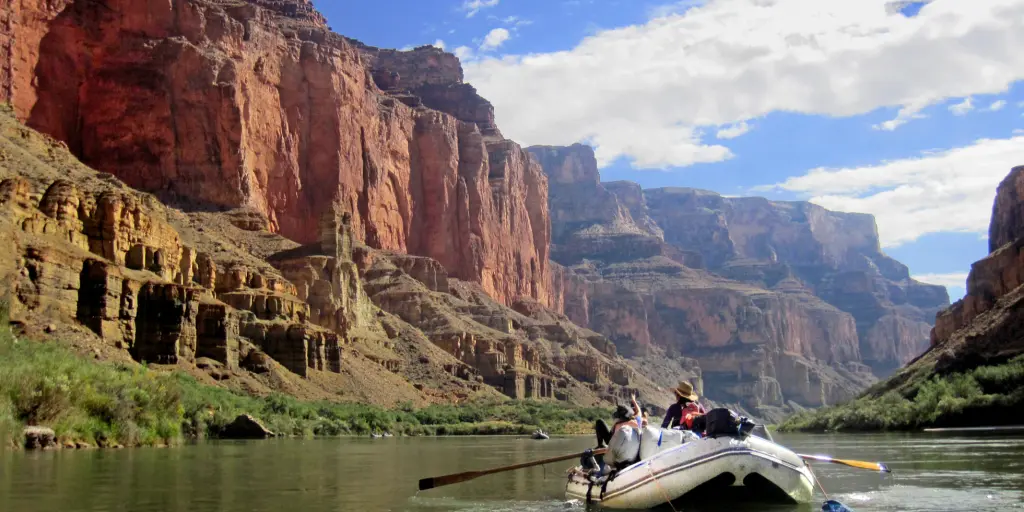
Even if you're not much of a gambler, Las Vegas is such a unique and recognisable sight to behold that it's worth doing a quick stop here.
Stay long enough to catch a glimpse of famous attractions like the Las Vegas Strip, the Bellagio Hotel and the ritzy MGM Grand casino.
For a fuller experience of this playground for adults, take in dinner and a show.
Driving from Maine to Washington state - the Great Northern Route
Miles : 3,226
How long does it take? 53 hours
The Great Northern Route starts in the city of Seattle and finishes up in Maine's stunning Acadia National Park (or vice versa, if you so please).
One thing that sets this route apart is the fact that there are hardly any cities on the way at all; instead, you can expect to be overwhelmed by the incredible variety of landscapes, from dramatic alpine mountains to the peaceful Great Plains and the arid region of the Columbia Plateau.
And throughout the trip you'll see a handful of the most beautiful national parks in the U.S.
If you're travelling in the colder months, you'll want to bring snow chains with you so that you're well prepared to drive through snowy and icy weather.
Niagara Falls
To catch a glimpse of the country's most famous waterfall, head south west through New York state and make your way to Niagara Falls, which lies on the border of Canada.
This jaw-dropping natural feature actually consists of three waterfalls - the Horseshoe Falls, the American Falls, and the Bridal Veil Falls.
Don your finest waterproof poncho and get up close and personal with the waterfalls before continuing on with your USA road trip.
Yellowstone National Park
Straddling the northwest corner of Wyoming, eastern Idaho and the southern border of Montana, this world-famous park is home to scenic hiking trails, exciting wildlife, and the largest collection of geysers in the world, including the famed Old Faithful.
You could - and should! - spend days getting back in touch with nature and exploring all the incredible sights and attractions here. If you're lucky, you just might spot a grizzly bear prowling around the park.
There are a number of charming hotels, resorts and cabins around Yellowstone where you can take a much needed break from your long trip.
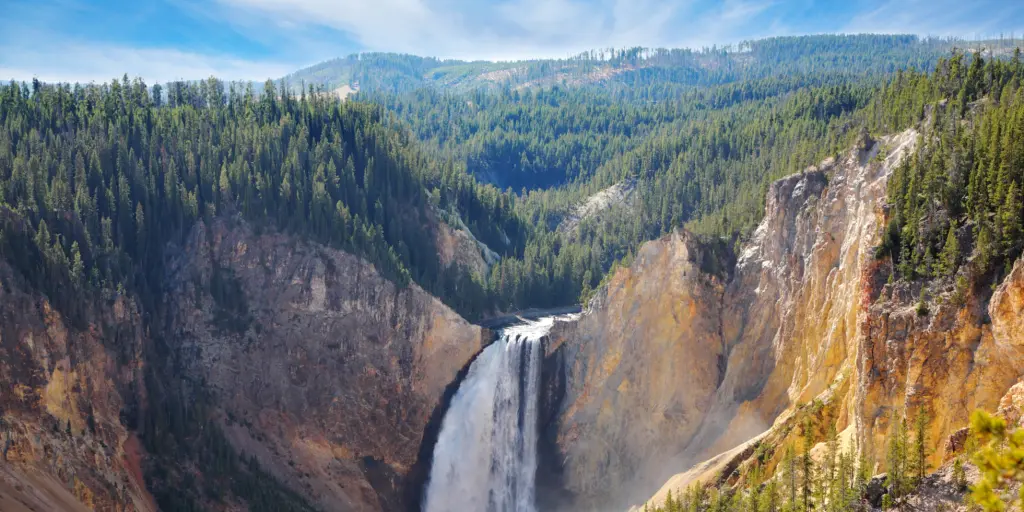
Glacier National Park, Montana
Way up north near the border between Montana and Canada is the outstanding Glacier National Park, yet another park worth stopping at on your road trip.
Go on an adventure down one of the more than 700 walking trails and see if you can spot any bald eagles soaring overhead.
For something a little different, why not try your hand at fly fishing? Glacier National Park has some of the best fly fishing in all of the country, and you don't need a permit to fish in its waters.
Driving from Georgia to California via U.S. 80 - the Southern Route
Miles : 2,387
How long does it take? 35 hours
Experience some of the most typically American destinations on a road trip through the American South starting in Savannah, Georgia, and ending in San Diego.
This route follows along Route 80 for much of the way, travelling through Georgia, Alabama, Mississippi, Louisiana, Texas, New Mexico and Arizona before finishing in California.
Expect historic towns, lots of barbecue and heaps of southern hospitality!
Georgia islands
If you have time at the start of your trip, consider discovering some of the many little islands that dot the Georgia coast near Savannah.
You'll be blown away by the area's rich history, diverse marine life and romantic feel.
Just 20 minutes from downtown Savannah, Tybee Island is the closest and one of the most popular nearby islands. Come here to relax on the wide, peaceful beaches and partake in watersports and eco-tours.
Drive an hour and a half south of Savannah and you'll reach the historic Jekyll Island, part of Georgia's Golden Isles.
Highlights here include an educational turtle rescue centre, a collection of old mansions once owned by some of the most prominent families in America, and the famous Driftwood Beach - an otherworldly stretch of sand covered in sun-bleached trees.
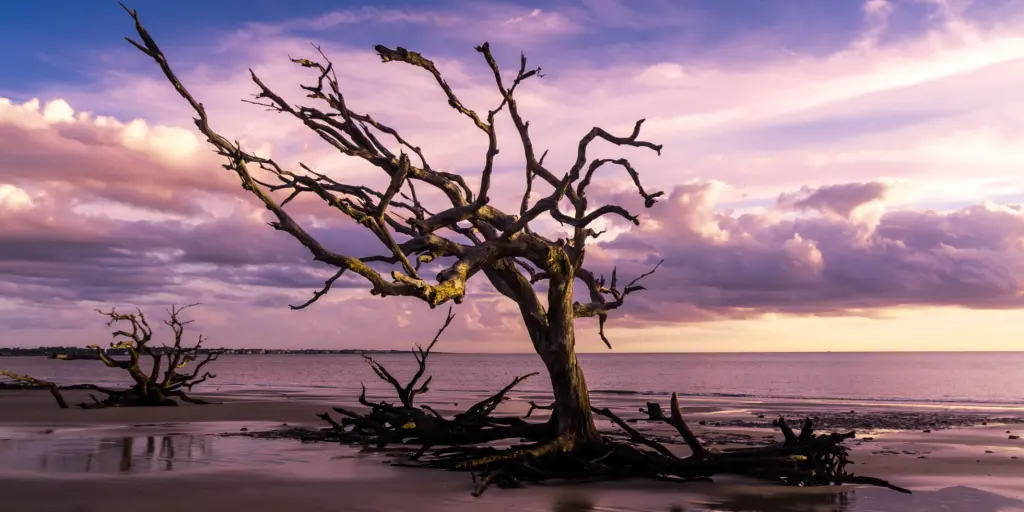
New Orleans & the Mississippi River
Walk in the footsteps of Tom Sawyer and Huckleberry Finn with a trip along the Mississippi, America's second longest river.
There are several old-fashioned riverboat rides departing from New Orleans, which will make you feel like you've stepped back in time to the 19th century.
Of course you should also spend some time on dry land in New Orleans itself, known for its vibrant music and nightlife scene as well as being a cultural melting pot of French, African and American heritages.
Dallas, Texas
Now's the time to get your fill of authentic American barbecue in the state that has one of the highest number of barbecue restaurants in the country: good ol' Texas.
The signature BBQ dish in the Lone Star State is beef brisket, which is seasoned, injected with marinade, and slow smoked until it is cooked to perfection.
If you're driving through Dallas and fancy sampling some of the best brisket around, head to Slow Bone BBQ on Irving Boulevard, or sample the deceptively simple (read: mouth-wateringly delicious) fare at old-time institution Mac's Bar-B-Que on Main Street.
Join our email list!
By joining our email list, you give LazyTrips permission to use your email for sending you newsletters, emails and updates including for marketing purposes. Your email will not be provided to third parties.
Related posts

These Maps Show How Ridiculously Long U.S. Travel Took in 1800

We complain that it takes over four hours to travel from New York to Washington, D.C., but it’s easy to forget that modern transportation is pretty damn fast. Over the course of the 19th century, the United States was transformed by the development of its rail network — before then, a trip to D.C. would have taken days .
Infrastructure improvements sound dull, but they have the ability to transform how we think about geography and time. It’s possible for a New Yorker to take a (very, very short) weekend trip to California, but in the year 1800, you would have needed to take the entire summer just to visit someone in Chicago. And if you made a friend on that vacation and then left, you probably wouldn’t ever see them again.
Look at this map below, taken from the Atlas of the Historical Geography of the United States published in 1932, which shows how long it would take someone in 1800 to travel across the country, using New York as a starting point:

It seems unfathomable these days, but the above situation didn’t last for long. By 1830, infrastructure was on the move. The first commercial railroad was built in Massachusetts in 1826, which led to the gradual development of further tracks based on British steam locomotive technology . At the same time, roads were rebuilt, extended and improved, which led to more vehicles. By now, you could probably visit your friend in Chicago in around six weeks. Here’s the same map in 1830:

In the ensuing period, rail went full steam ahead. By 1840, around 3,000 miles of railroad track had been built, and the earlier noisy trains improved and were made faster. Your friend in Chicago? You could visit them during a long weekend. By 1857, New Yorkers could travel to other northeastern cities in a matter of hours:

The improved infrastructure led to a dramatic change in American industry. Goods could now ship far further than ever before. The end of the First World War led to an increased construction workforce, as military men sought to use their skills for other projects. In 1830, three days travel would take you as far as North Carolina, but by 1930, you could reach the Californian coast:

These days? You can fly from New York City to Los Angeles in around six hours. Way back in 1800 you probably wouldn’t have made it out of New Jersey by that point. Your friend in Chicago is now just a two-and-a-half-hour flight away, and the rest of the world is open for us to explore.

Flight Time Calculator
Flying time between cities.
Travelmath provides an online flight time calculator for all types of travel routes. You can enter airports, cities, states, countries, or zip codes to find the flying time between any two points. The database uses the great circle distance and the average airspeed of a commercial airliner to figure out how long a typical flight would take. Find your travel time to estimate the length of a flight between airports, or ask how long it takes to fly from one city to another.
You can also search for the closest airport to any city in the world or check the flying distance between airports. If you're thinking about a road trip, compare the driving time for the same route.
Home · About · Terms · Privacy

Nomadic Matt's Travel Site
Travel Better, Cheaper, Longer
How to Road Trip Across the United States on a Budget
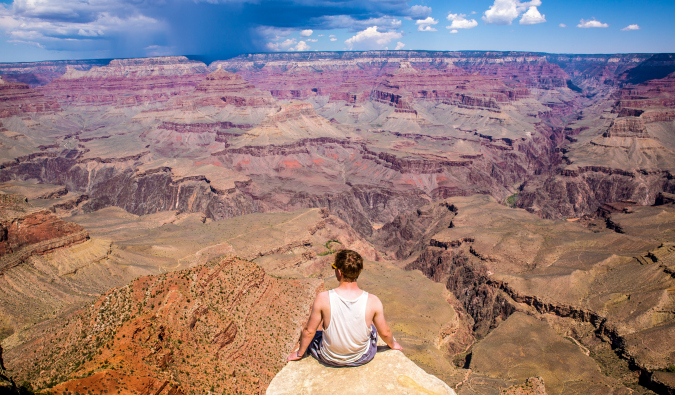
The Great American Road Trip is a rite of passage in the United States . We Americans have a unique fascination with the open road. It’s built into our cultural DNA. In Jazz Age America, the car was a symbol of freedom — a chance to escape your small town and the watchful eyes of parents.
As the highway system was developed in the 1950s, a wave of kids set out on the road to explore the country, giving new life to America’s car and road trip culture. Today, many still dream of getting in a car and driving into wide open spaces for months on end.
I’ve had the privilege of taking several multi-week and multi-month road trips around the country over the years. From traveling the Deep South to criss-crossing the country coast to coast , I’ve visited almost every state, exploring the myriad nooks and crannies of Uncle Sam’s backyard.
One thing is for certain, in diversity and scale, the United States is virtually unrivaled.
But this isn’t a post about fawning over America and its landscapes ( this post is ). This article is about how you can travel around the US on a budget.
Because, as it turns out, this country is surprisingly easy to travel on the cheap.
While rising gas prices and rental car price gouging post-COVID put a damper on things, it’s still easier than you think to have a budget-friendly road trip adventure around the USA.
In this post, I’ll explain how much I spent on one of my trips, how much you should expect to spend, and how you can save money on your next road trip.
Table of Contents
How Much Did My Cross-Country Road Trip Cost?
How to save money on your road trip, how to save on accommodation, how to save on food, how to save on sightseeing, how to save on transportation.
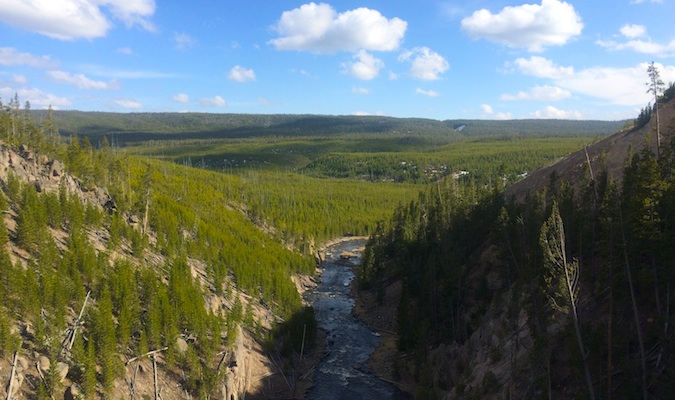
After 116 days traveling around the United States on this trip, I spent $6,262.67 USD, or $53.98 USD per day. While that is slightly higher than $50 USD a day, there were many parts of my budget I splurged on (see breakdown below) which skewed the number up. I definitely could have visited the country even cheaper if I didn’t have an addiction to Starbucks and sushi.
Here is how the numbers from my road trip break down:
- Accommodations: $1,036.36
- Food: $3,258.23
- Drinks: $438.94
- Gas: $696.98
- Parking: $253.00
- Starbucks: $75.26
- Miscellaneous (movies, toiletries, etc.): $170.00
- Attractions: $269.40
- Taxis: $41.00
- Bus: $17.50
- Subway: $6.00
- TOTAL : $6,262.67
Let’s break this down. First, my Starbucks addiction was unnecessary and added to my costs. Second, as a lover of sushi, trying various restaurants throughout my road trip drastically raised my food costs. Sushi, after all, is not cheap.
Moreover, I ate as if I wasn’t on a budget and rarely cooked, which is why my food expenses were so high relative to everything else. I would have definitely gone below $50 USD per day if I followed my own advice and cooked more often.
But, while I splurged in some places, three other things really helped me to keep expenses down: First, gas prices were low, averaging around $2.35 USD a gallon over the duration of my trip. (We’re going to discuss how to still do a road trip on a budget with high gas prices in the next section.)
Second, once you leave the big cities, prices for everything drop by nearly half so I spent a lot of time out of cities.
Third, I used Couchsurfing and cashed in hotel points to keep accommodation costs down. That helped a lot.
Overall, I didn’t do too bad and am happy with how much I spent. But is this how much you’ll spend, especially in the face of inflation and high gas prices? Let’s discuss that below.

It’s no secret travel costs a lot lately and inflation and high gas prices have really made super cheap road trips hard if you’re not staying places for free but that doesn’t mean the road trip has to be super expensive.
With that in mind, here’s how to cut your accommodation, sightseeing, food, and transportation costs — all without cutting into your experience!
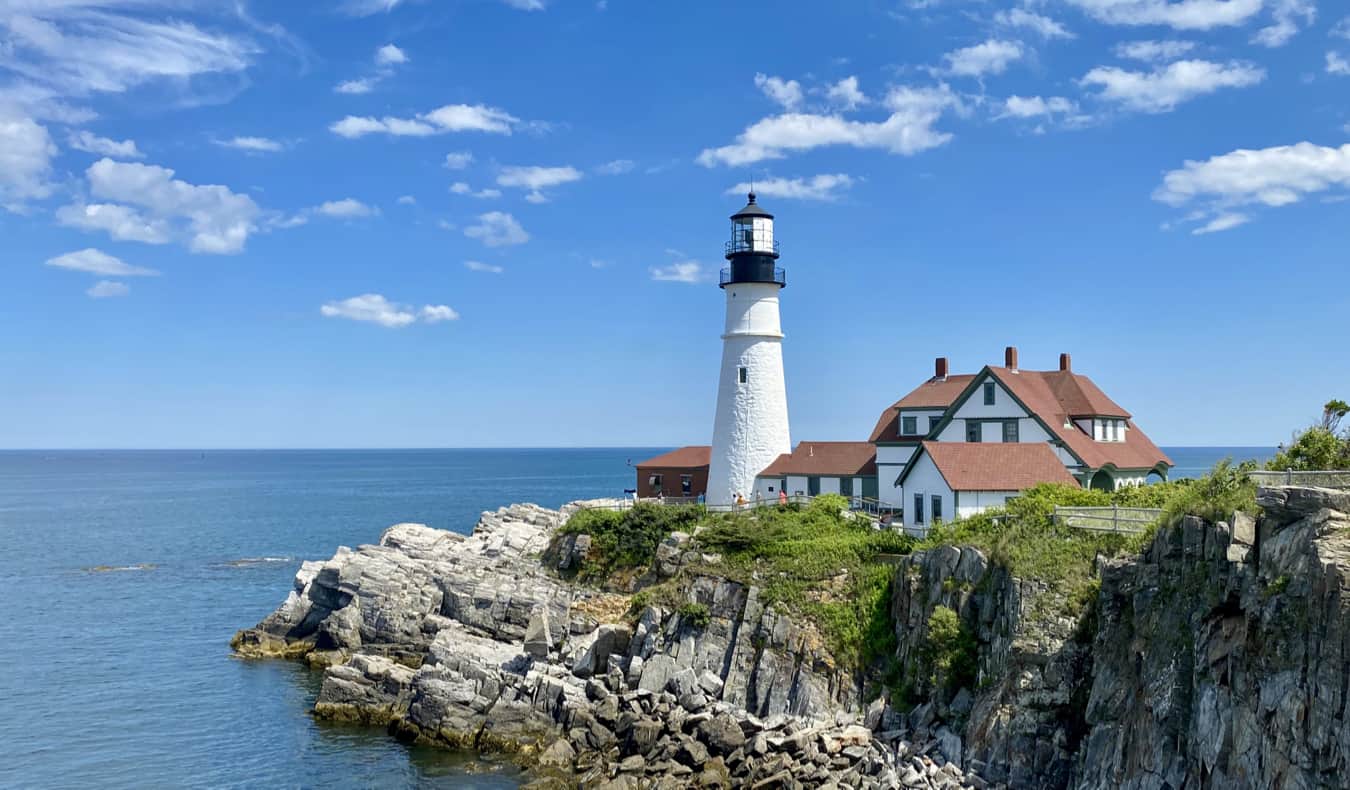
1. Couchsurf — Couchsurfing is a service that allows you to stay with locals for free. Using this website (or similar ones) is the best way to lower accommodation costs, as you can’t get cheaper than free!
More than that, it’s a wonderful way to meet locals, get insider tips, and find off-the-beaten-track stuff to do in the area you’re visiting. While you’re generally expected to reciprocate your host’s kindness (cooking them a meal, taking them out for drinks or coffee, etc.), it’s still far cheaper than paying for a hotel or motel.
While the app has seen its community shrink in recent years, there are still plenty of hosts across the United States so you’ll rarely find problems finding someone to put you up.
Additionally, if you don’t feel comfortable staying with a stranger, you can use the app to meet people for drinks, coffee, activities, or anything else you want to do. That way, you can still meet a local and get their insider tips without having to stay with them. The app has all kinds of meet-ups and events too so be sure to check it out.
2. Airbnb — I only recommend using Airbnb in rural, out of the way places where hotels are limited. Avoid them as much as possible in other circumstances. Here is why we don’t really recommend them.
3. Budget hotels — There are a plethora of cheap roadside hotels such as Motel 6 and Super 8 that will help you stay cheap. Rooms start around $50 USD per night and are super basic and always look well worn. You’ll get a bed, bathroom, TV, tiny closet, and maybe a desk. They are nothing to write home about, but for a quiet place to sleep for a night, they do the trick.
And if you’re traveling with someone you should always say the room is for one person as these hotels charge you more for two people.
Also, make sure you sign up for Booking.com and Hotels.com loyalty programs. Hotels.com gives you a free room after 10 bookings, and Booking.com offers members 10% off bookings, as well as free upgrades and perks if you book multiple times after signing up. They definitely helped a lot.
Pro tip : Book through websites like Mr.Rebates or Rakuten . By using their links before going to Hotels.com or Booking, you’ll get 2-4% cash back in addition to the loyalty program deals.
4. Hotel points — Be sure to sign up for hotel credit cards before you go and use those points when you travel. You can get upwards of 70,000 points as a sign-up bonus, which can translate into a week’s worth of accommodations.
The points came in handy in places where I couldn’t find an Airbnb, hostel, or Couchsurfing host. This saved my butt in big cities around the country. I was glad I had accrued so many hotel points before my trip.
To learn more about, check out these posts:
- The Best Hotel Credit Cards
- The Ultimate Guide to Picking the Best Travel Credit Card
- Points and Miles 101: A Beginner’s Guide
- The Best Travel Credit Cards
5. Hostels — There aren’t many hostels in the United States, and most of them are overpriced. A dorm room typically costs around $30 a night, which means you can obtain a similar private room on Airbnb at the same price. If you are traveling with others, it’s often more economical to get a budget hotel than a bunch of dorm beds.
However, if you are traveling solo and want to meet others, the social benefits may outweigh the lack of value. There were just some times I didn’t want to be alone – I wanted to be around other travelers.
Some of the hostels I loved are:
- Samesun Venice Beach (LA)
- South Beach Hostel (Miami)
- India House (New Orleans)
- Jazz Hostels (NYC)
- ITH Adventure Hostel (San Diego)
- The Green Tortoise (San Francisco and Seattle).
For more hostel suggestions, here’s a list of my favorite hostels in the USA.
6. Camping — Dotted around the country — including around all the national parks — are inexpensive campsites. If you have a tent and camping gear, this is by far the cheapest way to travel. Campsites cost between $10-30 USD per night, which makes seeing the country incredibly affordable. Most campsites have basic amenities like running water, bathrooms, and the ability to upgrade to get electricity.
In addition to your standard campgrounds, check out the sharing economy website Campspace . It lets you pitch a tent on private properties all around the country for a small fee. Much like Airbnb, some plots are super basic and barebones while others are more luxurious, so be sure to poke around for a cheap place to stay as there are plots available all around the country.
It’s also legal to wild camp in national forests and on BLM land unless otherwise marked.
7. Sleep in your car — I know this isn’t glamorous but sleeping in your vehicle brings your accommodation costs down to zero. I know lots of travelers who did this to make their trip more affordable, some sleeping in their car just occasionally and others doing it every night. Chances are you won’t sleep well but you will save money, and that’s a fair trade to some people!
For those traveling in an RV, there are tons of free places to park and camp all around the country. Use iOverlander to find the best spots.
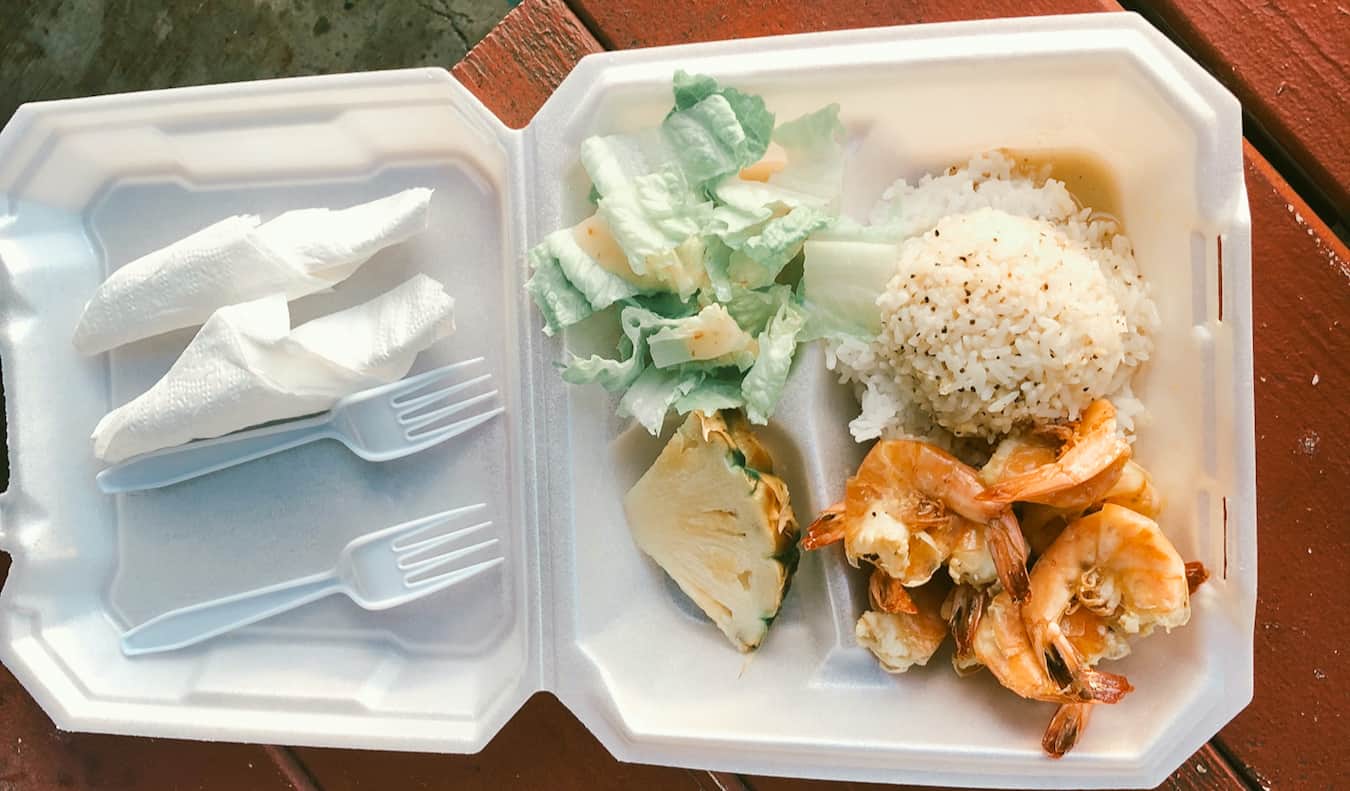
To help you keep your food costs in check, here are a few quick tips:
1. Cook your own meals as often as possible – If you can bring a cooler in your vehicle, you can pack groceries instead of eating out all the time. And if you bring some containers, you can store leftovers in the car too, allowing you to cook larger meals at dinner that you can eat the next day for lunch.
2. Stay in accommodation with a kitchen – If you want to cook, you’ll need a kitchen. Prioritize accommodation like Couchsurfing, Airbnb, and hostels as those will typically provide kitchen access so you can cook your meals.
3. Shop cheap – Avoid the pricier grocery stores like Whole Foods when it comes to getting groceries and stick to budget places like Walmart. It’s not glamorous, but it will be cheap!
4. Find cheap restaurants – When you want to eat out but don’t want to break the bank, use Yelp, ask people on websites like Couchsurfing, or inquire at the desks at hostels for suggestions. Locals have the best tips and insights when it comes to where to eat so they can point you in the right direction. Simply cook, limit your eating out, and be happy!
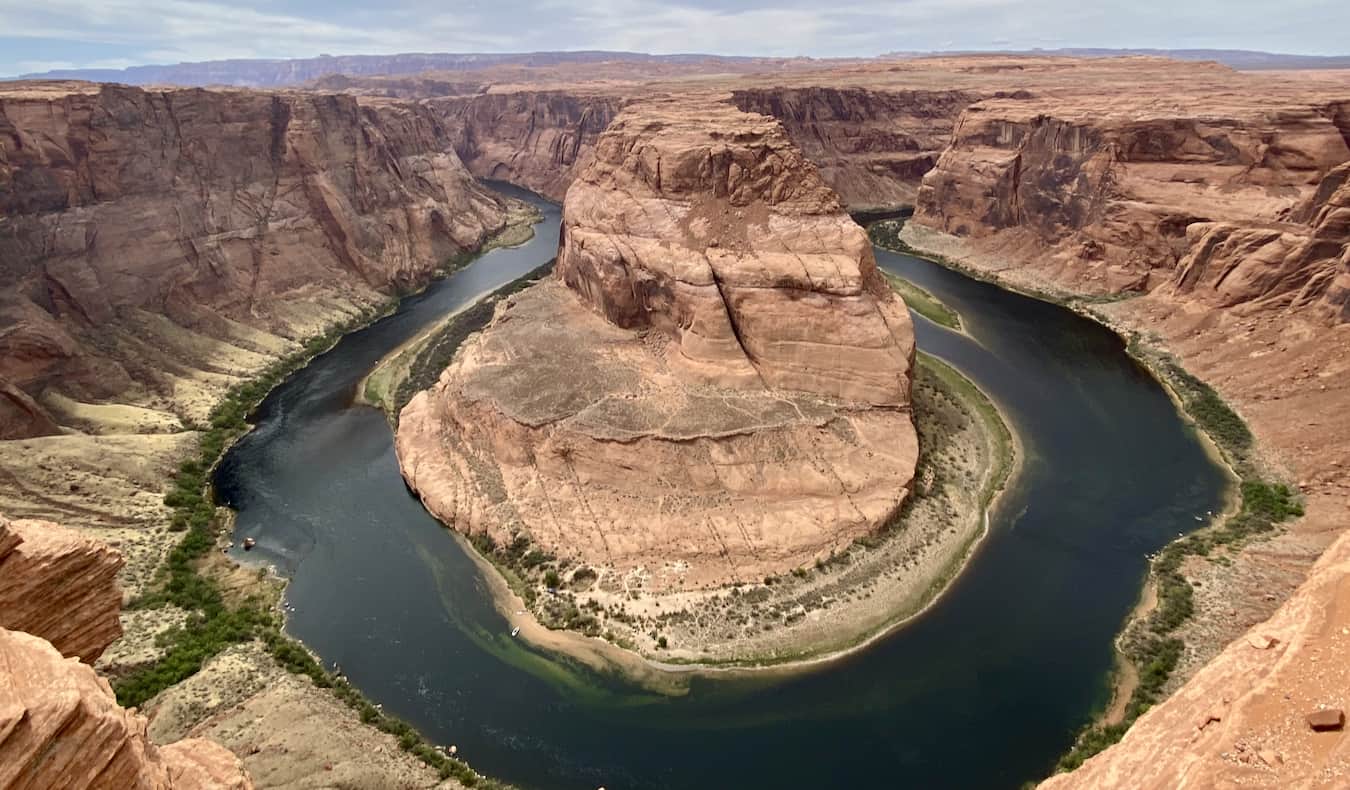
1. Get a National Parks pass — For $80, you can purchase an annual National Parks and Federal Lands ‘America the Beautiful’ pass that provides access to all 63 national parks (as well as any other recreation areas administered by the National Park Service). In total, you can visit more than 2,000 federal recreation sites with the same pass. At $20-35 USD per visit, seeing five during your trip makes the pass a money saver. When you visit your first park, simply buy the pass and you’re good to go. There’s no need to order it in advance.
The U.S. national park system is amazing and really highlights the diversity of landscapes in the country. You can’t travel across the country without stopping at many of the national parks, especially as you get out west.
2. City tourism cards — City tourism cards allow you to see a large number of attractions (and often include free public transportation) for one price, usually $75-100 USD. They provide free access to museums, reduced access to attractions, and restaurant discounts. Be sure to look into them if you plan on doing a lot of sightseeing, as they generally will save you money. They can be purchased at tourism information centers or online before you go.
3. Free museums and events — Inquire at tourism centers, use Google, or ask hotel or hostel staff for information about free events and museums. Many museums offer occasional free or discounted admission throughout the week. There are always tons of free activities in any city in the United States.
4. Free walking tours and city greeter programs — Many cities in the US have free walking tours or city greeter programs that pair you with a local guide who can give you a brief tour. Whenever I visit a new city, I start my trip off with one of these tours. They show you the lay of the land, introduce you to the main sights, and give you access to an expert local guide that can answer all your questions.
Check in with the local tourism office when you arrive to see what programs and tours are available.
For greeter programs, you’ll need to sign-up in advance before your visit. It’s good to give about 2 weeks’ notice as they have to find someone to take you around. Google “(city name) greeter program” to find them as some are run independently of the city tourism board so might not be listed on their website.
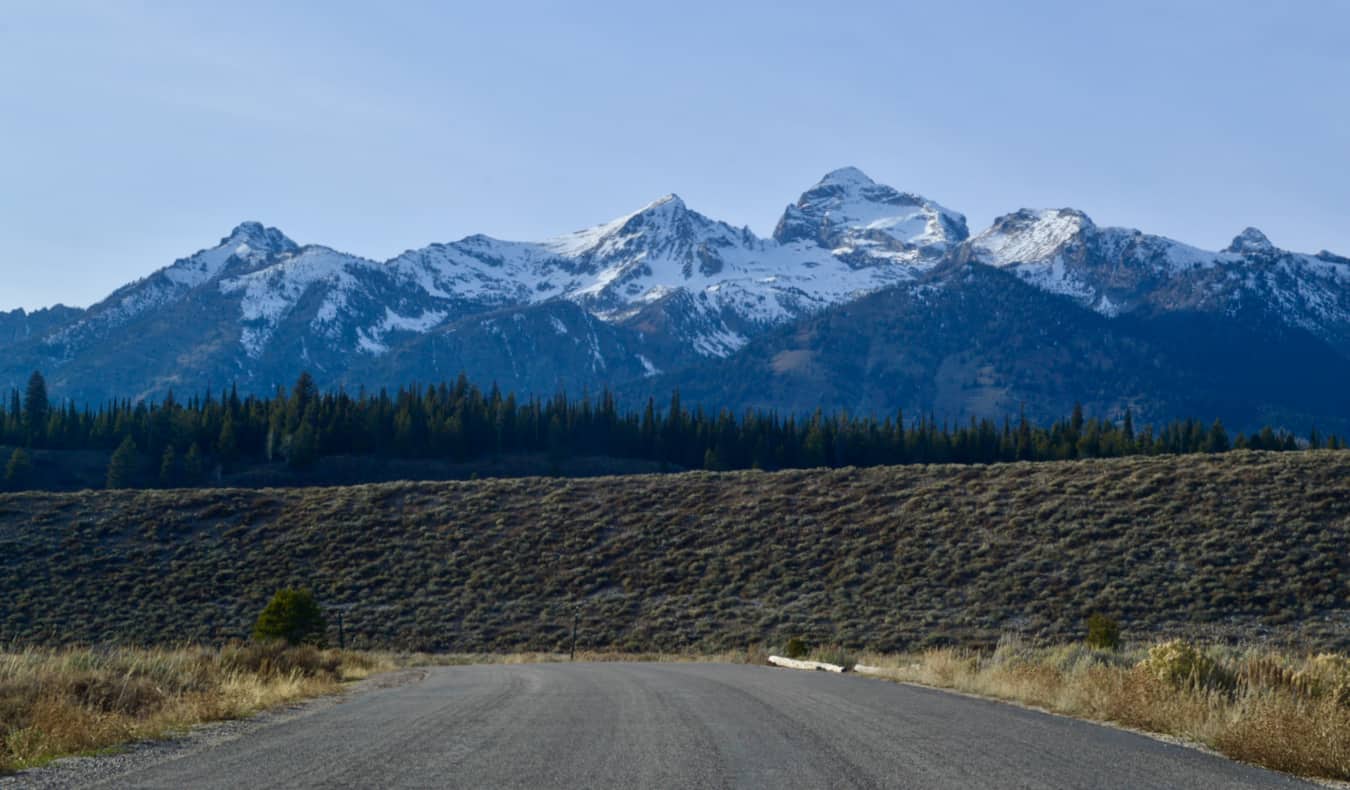
Here are your options when it comes to traveling across the country:
1. Hitchhike — This isn’t something I did on my trip, as I had a car, but it’s very doable (and relatively safe). Here’s a post by my friend Matt who hitchhiked across the United States explaining how to do so and come out alive (don’t worry, it’s safer than you think)..
For more hitchhiking tips, use Hitchwiki .
2. Rideshare — Taking on riders can be a way to lower your costs. On my first trip across the U.S., I offered rides to people I met in hostels. On this trip, I had friends and readers join me along the way. You can post ads on Craigslist and Gumtree and at hostels to find riders. This not only makes the trip more enjoyable but lowers your gas costs. Or if you are a rider, you can use the same services to find rides to get you places.
3. Buy a car — If you don’t have a car or don’t want to rent one, you can buy cheap used cars from car dealers or owners on Craigslist. There are lots of listings, and you can resell the car at the end of your trip to recoup some of your initial purchase cost. While this is easy in other countries, it’s hard to do in the United States, so remember a couple of key points:
- You’ll need a US address for registration documents to get sent to. I would use a hostel or hotel address and then set up a forwarding address with the Post Office.
- You’ll have to buy car insurance, which can greatly add to the costs of your trip.
Another option is to use a car relocation service. This is when you take someone’s car and drive it across the country. You are usually paid, and gas is covered. The downside is you don’t often have a lot of leeway on timing, so you might not have much time to stop and sightsee along the way. Car relocation options are also usually limited. Two companies worth checking out are Transfercar and Hit the Road .
If you just want to rent a car, use Discover Cars .
4. Use gas apps & membership programs – Install GasBuddy , an app that finds the cheapest gas prices near you. It is a must. If you’re going on a longer road trip, sign up for the monthly program; it costs $9.99 but will save you up to 40 cents a gallon.
Also, sign up for every gas loyalty program you can, so as to maximize points and discounts. Moreover, if you get a brand’s credit card, your first 50 gallons usually come with 30 cents off per gallon.
You should also consider getting a Costco membership for cheap gas. They have around 574 stores around the US so you’ll be able to earn the cost of a membership back by saving money on both gas and food.
5. Download parking apps – Parking costs add up — especially in cities. Use apps like BestParking and Parker to find spots and compare prices.
6. Take the bus – If driving is entirely out of the question, you can find bus tickets for as little as $1 USD from Megabus. Greyhound and Flixbus also have cheap rides all around the US. Rides under five hours are usually around $20 USD if you book early, and overnight rides usually cost $50-100. You can save big if you book in advance (often upwards of 75%!).
Don’t let the United States fool you! A road trip across the United States is a fun way to see a lot of diverse landscapes, experience different cultures, and meet interesting people. Traveling America isn’t very expensive once you are outside the big cities and you can easily travel the country on a budget by using the advice in this article.
Book Your Trip to the USA: Logistical Tips and Tricks
Book Your Flight Use Skyscanner to find a cheap flight. They are my favorite search engine because they search websites and airlines around the globe so you always know no stone is left unturned!
Book Your Accommodation You can book your hostel with Hostelworld as they have the biggest inventory and best deals. If you want to stay somewhere other than a hostel, use Booking.com as they consistently return the cheapest rates for guesthouses and cheap hotels.
Don’t Forget Travel Insurance Travel insurance will protect you against illness, injury, theft, and cancellations. It’s comprehensive protection in case anything goes wrong. I never go on a trip without it as I’ve had to use it many times in the past. My favorite companies that offer the best service and value are:
- Safety Wing (for everyone below 70)
- Insure My Trip (for those over 70)
- Medjet (for additional evacuation coverage)
Looking for the Best Companies to Save Money With? Check out my resource page for the best companies to use when you travel. I list all the ones I use to save money when I’m on the road. They will save you money when you travel too.
Want More Information on the United States? Be sure to visit our robust destination guide on the US for even more planning tips!
Got a comment on this article? Join the conversation on Facebook , Instagram , or Twitter and share your thoughts!
Disclosure: Please note that some of the links above may be affiliate links, and at no additional cost to you, I earn a commission if you make a purchase. I recommend only products and companies I use and the income goes to keeping the site community supported and ad free.
Related Posts
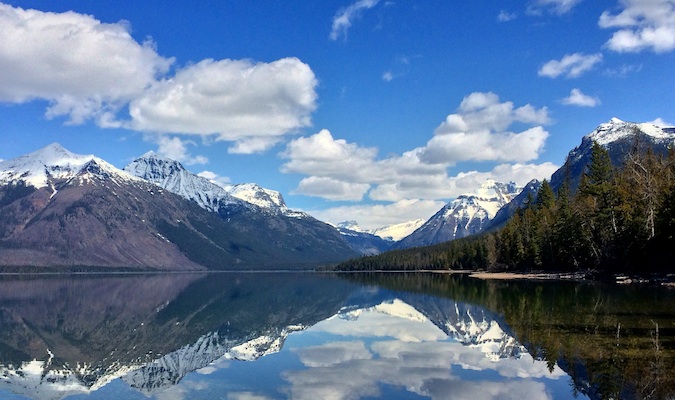
Get my best stuff sent straight to you!
Pin it on pinterest.
What It Was Really Like To Travel Across The US In The 1800s
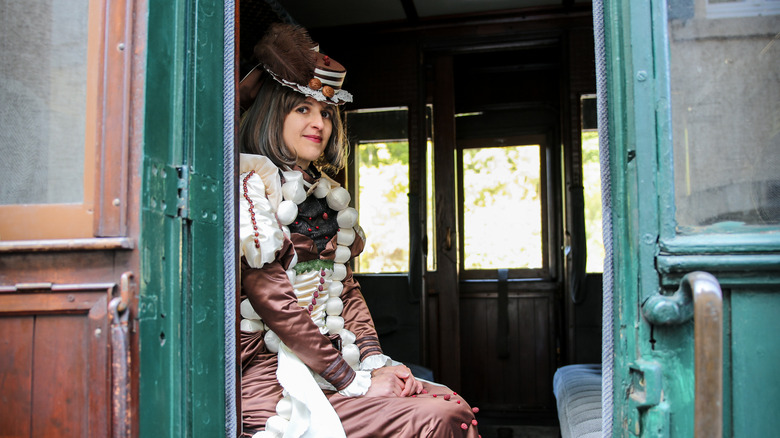
One of the things we take completely for granted in the 21st century is the act of being comfortable. If you are driving somewhere, you can open or close your car windows at the push of a button. You can push another button to warm your butt. Add in modern tires, not to mention good (or at least decent) roads, and it all means a painless ride. Sure, there's plenty you could complain about, like traffic jams, potholes, the type of music your passengers are making you listen to, and how you can never adjust the seat to get the lumbar support exactly how you like it.
Well, your ancestors are rolling over in their graves, you ungrateful little – Not only did traveling back in the 1800s take tens or even hundreds of times longer than it does now, but the process of traveling was painful, uncomfortable, and very often deadly. That's right: even though we're talking about covered wagons , slow trains, and bicycles , just about every type of travel would try to kill you. So you'd spend days or weeks being uncomfortable and cold, only to maybe die before you even reached your destination.
But the 1800s was a time of immense progress. In that 100-year period, you went from people dreaming that the Industrial Revolution might make boats a little bit faster, to the first person driving a car across the entire United States. Here's what it was really like to travel across the U.S. in the 1800s.
Wagon trains and the Oregon Trail
It won't be a surprise to anyone who's a millennial that traveling by wagon train, specifically on the Oregon Trail, was a dangerous endeavor. But there was a lot more that could kill you than fording rivers and dysentery. And even if you lived, that didn't mean taking a wagon out west was at all a pleasant experience.
The Oregon Trail Center says Margaret Frink kept a journal when she and her husband traveled to California in search of gold in 1850, and that it's one of the best records we have of the experience. One average day went like this: "We started at six o' clock, forded Thomas Fork, and, turning to the west, came to a high steep spur that extends to the river. Over this high spur we were compelled to climb ... Part of the way I rode on horseback, the rest I walked. The descent was very long and steep. All the wheels of the wagon were tied fast, and it slid along the ground. At one place the men held it back with ropes, and let it down slowly." Two days later, things got worse: "It rained considerably during the night. Mr. Frink was on guard until two o' clock, when he returned to camp bringing the startling news, that for some unknown cause, the horses had stampeded."
Abigail Scott was just a girl when she was put in charge of recording her family's journey out west. One line highlights the harsh realities of the trail: "The mosquitoes are troublesome in the extreme: passed four graves."
The Cumberland Road
In a country where an interstate system of highways has been the reality for almost 100 years, it's easy to forget that means for a century and a half before that there just ... wasn't one. But once the U.S. started claiming and colonizing the West in earnest around the turn of the 19th century, they realized the lack of good roads was an issue. Suddenly people on the East Coast had reason to head west in droves, and they knew the trip would be a million times easier if there was a road.
This meant there was a big push to build said road. Known as the National Road at the time, now the Cumberland Road, it transformed the country completely. According to National Geographic , it was the first road in the new country to be funded by the federal government. Started in 1811, it was a massive undertaking which continued for decades. But as each new section was built, it opened up wide areas of the country to colonizers, allowed easier trade, and laid the literal and figurative groundwork for the eventual highway system we have today.
Even at the time, everyone knew how big a deal the National Road was. Politico reveals that by 1825, the road was so beloved it was "celebrated in song, story, painting and poetry." Can that be said about any other road besides Route 66? After all, even with all the creative types who live in Los Angeles, no one is writing love songs about I-5.
Surely, of all the ways to travel in the 1800s, the steamboat must have been the most pleasant. No beautiful views, nice regular pace, room to walk around on deck. Look how happy Mickey Mouse was in that cartoon! The Mississippi was the backbone of the country, and people traveled up and down it constantly.
One person who spent a lot of time on steamboats on the Mississippi was Mark Twain. His pen name even comes from his time on the river, and he wrote a memoir about his experiences called "Old Times on the Mississippi." In an except ( via the New York Times ), he talked about how his first steamboat experience involved some unexpected issues: "What with lying on the rocks four days at Louisville, and some other delays, the poor old Paul Jones fooled away about two weeks in making the voyage from Cincinnati to New-Orleans."
Not all steamboat trips were on the Mississippi, nor so boring. A student at Oberlin wrote a letter to his family in 1837 telling them about his dramatic journey to the college on a steamboat traveling from Providence to New York: "A sudden and severe gale struck upon us, which for a few minutes, rendered the prospects of life, hopeless. There were three or four hundred on board, I should think, whose lives were all saved by a hair's breadth. – The wind came so sudden & strong, that it tipped the boat up so much that it almost dipped, ... But while it was safety for us, others were overwhelmed in the deep."
Before railroads, canals were going to be the next big thing. And they were the cutting edge of progress; Thomas Jefferson called the proposal for the Erie Canal "little short of madness," according to Eyewitness to History . Once it was finished in 1825, the Erie Canal cut the time it took to get from New York to Chicago in half, plus it was a much smoother ride than a carriage on unpaved roads.
Thomas S. Woodcock took a trip on the Erie Canal in 1836 was amazed at how nice the boat was, even though it looked so small from the outside. But, Tardis-like, somehow the inside was lovely. "These boats are about 70 feet long, and with the exception of the kitchen and bar, is occupied as a cabin ... at mealtimes ... the table is supplied with everything that is necessary and of the best quality with many of the luxuries of life."
Who wouldn't like traveling on a canal boat? Luxurious, calm, good food. And surely nothing could be safer than slowly floating down a canal. Right, Thomas S. Woodcock? You're not going to tell us that horrific deaths occurred on the boats? "The Bridges on the Canal are very low, particularly the old ones. Every bridge makes us bend double if seated on anything, and in many cases you have to lie on your back ... Some serious accidents have happened for want of caution. A young English woman met with her death a short time since, she having fallen asleep with her head upon a box, had her head crushed to pieces."
Early railroads
It cannot be overstated how important the railroad was. But in the year 1800, there were no railroads. Which meant the next 100 years involved inventing and perfecting them, but the bit in between could get a bit messy. Early railroads were not the same as the railroads travelers would enjoy at the turn of the 20th century.
Inventor Oliver Evans famously predicted in 1812, "The time will come when people will travel in stages moved by steam engines from one city to another almost as fast as birds fly – 15 to 20 miles an hour ... A carriage will set out from Washington in the morning, and the passengers will breakfast at Baltimore, dine in Philadelphia, and sup at New York the same day."
The dream began to be realized in 1827, according to the Library of Congress , when the first 13 miles of railroad track opened. The train was still only about as fast as a horse, but it was a start. What was fast was the expansion of the railroads from there. There was big money in it, no government oversight, and ridiculously half-arsed construction. This meant train derailments were common, per American Rails , and people died. Sometimes the floors of the train car would "disintegrate," with deadly results. The trips were also psychologically jarring. Railroads and the Making of Modern America explains how people's very concept of space and time was "annihilated" by the speed of this new way of travel.
Room and board
When you were traveling out west, you usually had to pack light. This meant that most people had to rely on places along the way for a place to sleep and, more importantly, a square meal. Even today stopping at a roadside restaurant while on a road trip is a gamble. Some places will be hidden gems, most ... not so much. While establishments like the St. James Hotel in Red Wing, Minnesota claim on its website today that after it opened in 1875 it was a "regular stop for riverboats and trains alike" and the guests found "modern features, including steam heat, hot and cold running water, and a state of-the-art kitchen," the general rule of stopping for food on your trip west was that it was going to be terrible.
"We found the quality on the whole bad," said traveler William Robertson, according to American Heritage , "and all three meals, breakfast, dinner and supper, were almost identical, viz., tea, buffalo steaks, antelope chops, sweet potatoes, and boiled Indian corn, with hoe cakes and syrup ad nauseam." Another man said things got worse the further west you went, when all you found were restaurants "consisting of miserable shanties, with tables dirty, and waiters not only dirty, but saucy."
But every now and then the traveler struck culinary gold ... or so one group thought. "The passengers were replenished with an excellent breakfast—a chicken stew, as they supposed, but which, as they were afterward informed, consisted of prairie-dogs—a new variety of chickens, without feathers. This information created an unpleasant sensation in sundry delicate stomachs."
Going around Cape Horn
Possibly the main reason so many advances in getting across the country emerged in the 1800s was because the only real viable way of doing it in the first half of the century took an absurdly long time. Basically, you got on a boat and then you didn't get off again for the better part of a year.
Not that the boats didn't look pretty! One observer, writing in "The Annals of the City of San Francisco, June 1852" ( via The Maritime Heritage Project ) described the sight of the boats entering the Bay, "large and beautifully lined marine palaces, often of two thousand tons ... These are like the white-winged masses of cloud that majestically soar upon the summer breeze."
But for those who were on the boats, they were probably more like a never-ending hell. Going from New York to California meant sailing around the very bottom of South America, a.k.a. Cape Horn. To get an idea of how slow this was, according to Stephens & Kenau , "the fastest clipper ship ever launched" was the Flying Cloud and her stats make for depressing reading today. In 1851, the ship "reached San Francisco in a record time of 89 days and 8 hours. The average time for clipper ships being more than 120 days." Three years later the boat beat her own record by a mere 13 hours. Even more shocking, no one else would beat that time for well over a century: not until 1989. And since most people in the 1800s weren't on the Formula 1 car of boats, and even the Flying Cloud ran into major, time-consuming issues on many of her voyages, this was not sustainable.
'An Overland Journey From New York To San Francisco In The Summer Of 1859'
The most logical way to get across the country in a quicker, safer, relatively cheaper fashion seemed to be by rail. But the idea of a transcontinental railroad was almost ludicrous. Take just one of the issues you'd run into: the Rocky freaking Mountains. Considering how new the technology was even in the middle of the century, not everyone was convinced it was possible.
One person who was sure it was worth trying was the founder of the New York Tribune, Horace Greeley. According to Encyclopedia.com , in 1859, he traveled across the country, writing articles about his journey for his newspaper. These were then turned into a book. Greeley wanted people to know all about the western part of the country and how awesome it was, and once they wanted to see it themselves, he'd get what he really wanted: a railroad to make the trip easier. Because Greeley had a tough time of it: a New York Times review of his book explained how "his stagecoach was overturned by buffaloes. His body was racked by boils from riding muleback weeks on end ... Fastidious about food and cleanliness, he had little chance to observe his principles about either westward of the Mississippi."
While the railroad was the most important reason he wanted people to learn about his trip west, there was another vital thing that he believed America needed to get to the frontier ASAP: "The first need of California today is a large influx of intelligent, capable, virtuous women."
The Transcontinental Railroad
While there were plenty of railroads before the Transcontinental railroad, they were a spider web of tracks and companies, mostly relatively localized. The Transcontinental would be different, and would do what it said on the tin: connect one coast to the other with railroad tracks. Technically, track only needed to be laid from Nebraska to California, and in 1869 it was finished. Now people could travel that 2,000 mile stretch in just a matter of days, according to History . Seven years after the Transcontinental railroad was finished, an express train made the journey in 83 hours .
It was not only faster, but impossibly more comfortable. "I had a sofa to myself, with a table and a lamp," wrote one rider ( via American Heritage ). "The sofas are widened and made into beds at night. My berth was three feet three inches wide, and six feet three inches long. It had two windows looking out of the train, a handsome mirror, and was well furnished with bedding and curtains." A reporter from the New York Times wrote it was "not only tolerable but comfortable, and not only comfortable but a perpetual delight. At the end of our journey [we] found ourselves not only wholly free from fatigue, but completely rehabilitated in body and spirits."
Of course, no long journey is perfect. In 1972, one traveler said the train trip "caused more hard words to be spoken than can be erased from the big book for many a day."
Getting across the country by (wo)manpower
One of the most extraordinary journeys that was undertaken during the 1800s wasn't from east to west, and it wasn't undertaken by a man.
An article in the San Francisco Call from May 5, 1896 explained the crazy plan: "Mrs. H. Estby and her daughter, aged 18, leave tomorrow morning to walk to New York City. They are respectable but will 'rough it' as regular tramps and carry no baggage." Respectable women walking alone across town was scandalous, let alone doing something no one had ever tried before. (Although Frank Weaver had made a cross-country trip by bicycle in 1890.) But times were hard, and the women had good reason, since "Mrs. Estby is the mother of eight children, all of whom are living with their father on a ranch near here, except the one going with her. The family is poor, and the ranch is mortgaged. Mrs. Estby, seeing no other way of getting out, concluded to make the journey afoot."
How would walking across the country save the farm? Well, some person or group or company (unfortunately this detail was lost somewhere over the past century, according to Transportation History ) was offering $10,000 to the first woman to accomplish the feat. For seven and a half months, going around 30 miles a day, working along the way to pay for food and board, the mother and daughter made their way to New York ... whereupon the sponsors refused to give them the prize on a technicality, and wouldn't even pay for the women to get home.
The first cross-country car journey was the end of an era
You could argue that in Britain, the 19th century didn't really end until 1901, with the death of Queen Victoria. In America, the key date could be seen as 1903, when the first person crossed the country by car. This signaled a new era, one where the West was no longer wild or out of reach to anyone. The continent had been crossed by foot, wagon, train, and now the newfangled car was added to the list.
H. Nelson Jackson, a doctor, and Sewall K. Crocker, a mechanic, drove from San Francisco to New York City after Jackson's friends said they didn't think it was possible. "The majority opinion expressed was that, save for short distances, the automobile was an unreliable novelty," Jackson would later explain ( via SFGate ). "Everyone pooh-poohed the idea of even attempting such a journey." So the two men and a dog named Bud set off.
While no one today would consider their trek easy, they managed it without major issues in just 63 days. Jackson spent $8,000 on the trip, which was a lot of money back then, but that number does include the cost of the car. Others were inspired, and copycat cross-country trips started by the dozens. The trip "was a pivotal moment in American automotive history ," said Roger White, curator at the Smithsonian National Museum of American History. "At the time they made the trip, there was a perception that the American frontier was closed. The Jackson-Crocker trip excited people across the nation. It got people thinking about long-distance highways."
A Mapped History of Taking a Train Across the United States
The first steam engine railway travel took place 209 years ago today. Here, the story of how the Civil War impeded, and then accelerated, the progress of America's trains.
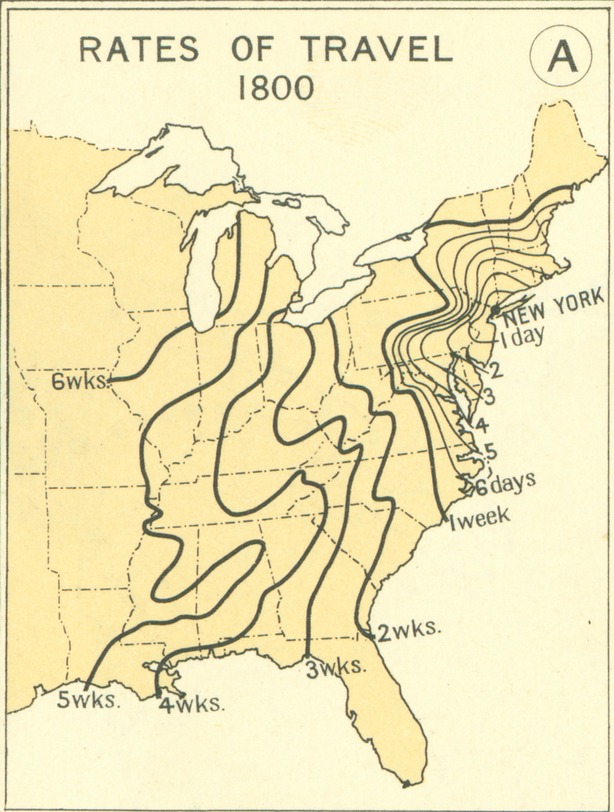
That progress you see in the above three maps was because of the steam engine. 1830 gave us Tom Thumb , the first U.S. steam locomotive, in Baltimore. And from there these machines took off.
But before we could build the transcontinental railroad, the Civil War broke out, which temporarily stalled things. Ultimately, however, the war accelerated the ubiquity of trains. Railway and bridges were destroyed, and Americans learned to rebuild them better and faster.

According to William Thomas, in The Iron Way , "The South possessed some of the most beautiful depots and railroad facilities in the nation in 1861. Sherman's campaigns sought to dismantle the Confederate railroad system and in so doing deny any claim to modernity and progress."

Meanwhile, guerrilla Confederates would attack trains, so the Union soldiers braced their bridges for attack and put up these block houses for bridge defenders. Sherman, knowing that his supply lines would be under attack, is said to have trained 10,000 troops in railroad repair before he marched on Atlanta. That his men were so adept at repairing their lines contributed to his success during the March to the Sea.
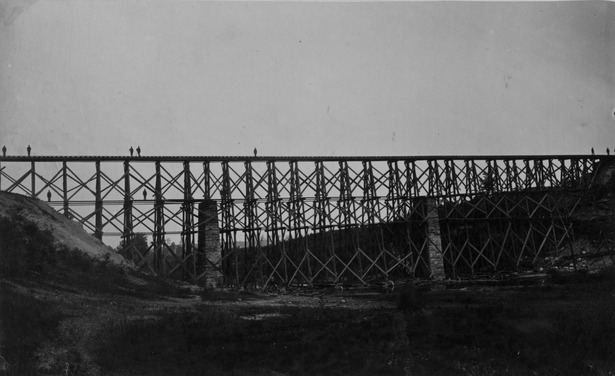
This bridge was destroyed and rebuilt several times. In May 1862 it was rebuilt in nine days. By 1864, they could rebuild it in 40 hours. Thomas notes that bridges like this contributed to the sense that railroad were "thought to defy nature."
After the war, many of these men put their railroad-construction skills and experience to use for non-military lines, and by 1930 the travel time from Manhattan to LA was down to three days.
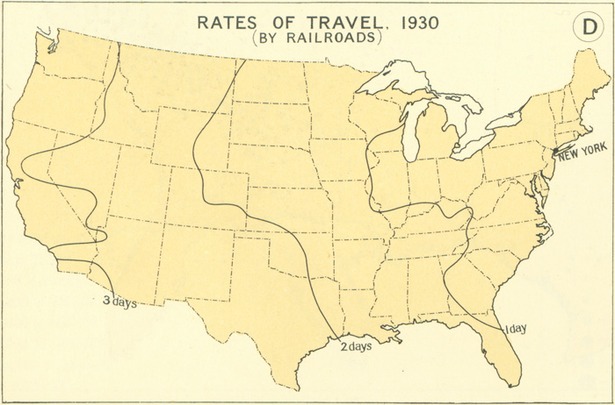
By 1930, three days brought us 2,500 miles. In 1800, three days would have taken us just 250 miles. Three weeks in 1857 was three days by 1930.
But comparing that 1930 map with Amtrak options today , despite the lack of any civil war to impede our growth since then, we're still at about the same travel times.
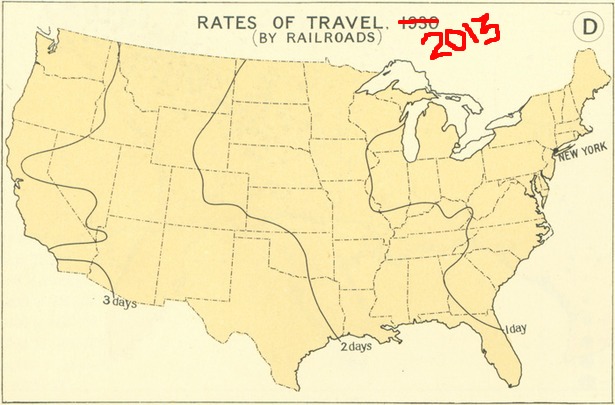

CROSS COUNTRY ROAD TRIP 101: THE BEST ITINERARIES AND HOW TO PLAN FOR THE GREAT AMERICAN ROAD TRIP
Post Summary: How to plan a cross country road trip, including the best routes, tips, and resources to use so that it’s smooth sailing once you hit the open road.
A cross country road trip through America is the kind of experience every adventurer needs to try once in their life.
With extraordinary national parks, breathtaking beaches, locally inspired cuisine, and quirky roadside attractions, there’s enough to keep you exploring for a lifetime. But how do you begin to plan a road trip?
The recipe for a great American road trip includes having the most current resources and tips at your disposal so you can get the most out of your time on the road.
That and a great playlist.
We embarked on our own three-month cross country trip in our renovated camper and learned a lot about how to plan a road trip across America.
We’re sharing everything we know, including the best cross country road trip routes and our own road-tested tips to help you plan an extraordinary adventure.
*We loved our USA road trip so much that we knew we had to include it in our post on the essential bucket list for families . Check it out for more inspiring travel ideas in the United States.
*This Cross Country Road Trip post may contain affiliate links, which means we might earn a small commission if you purchase from them. This is at no extra cost to you. We only suggest what we think is truly awesome.
CROSS COUNTRY ROAD TRIP GUIDE
This is an in-depth article that will cover everything you need for planning a cross country road trip. You can use the table of contents above to skip around to a section you want to read.
In this article, we’ll cover:
- How many days you’ll need
- What kind of car you need
- Things you need for a cross country road trip
- Cross country road trip cost analysis
- Cross country road trip tips
- The best cross country road trip routes
HOW LONG DO YOU NEED FOR A CROSS COUNTRY ROAD TRIP?

So how long does it take to do a cross country road trip? The drive from Los Angeles to New York City is 2776 miles and takes roughly 41 hours without stopping. At 8 hours a day, that would take you five days to complete.
But what about stops and, you know…enjoying the ride?
Without knowing your route, it’s hard to suggest a time frame. At a minimum, you’ll need a week for a one-way cross country road trip. Two weeks is better, though. Two weeks allows you to drive for shorter distances and to take more time to enjoy the places you stop at. Three weeks is perfection!
America is the 3rd largest country in the world, so there’s a lot of ground to cover when driving cross country. It’s estimated that it takes about three months to see every state in the lower 48.
THE BEST ROAD TRIP ROUTES IN THE US

When planning a road trip, the question “What is the best cross country road trip?” is bound to come up. The sheer size of the US makes answering it a complicated task. Below, I will cover the most iconic road trip routes and a few other suggestions to spark your own creativity.
Some things to consider for yourself are how much time you have, what season you’ll be traveling in, and what kind of stops you’re interested in making. Do you want to focus on nature activities, touring big cities, tasting America’s best food, or quirky roadside attractions?
Let the following routes be an inspiration, but don’t forget it’s also possible to plan your trip as you go.
When we built our cross country road trip itinerary, we knew we needed to get from North Idaho to Maryland. It was winter, so we chose to avoid the Rocky Mountains and any hazardous winter driving conditions. We opened up a map (really, it’s more like we opened up an internet browser and looked at Google Maps) and figured we should head South and plan as we go.
We knew we would visit Utah’s National Parks, but other than that, we left it open to allow for spontaneity and random side trips.
On our way traveling through Arkansas, I looked at the map and noticed we would be close to Hot Springs National Park. We had time, so we decided to make a small detour to see America’s first unofficial National Park. Those are the kind of things you want to leave time and space for.
Let’s explore the most popular cross country road trip routes.
*Also, the maps pictured below for each road trip aren’t for driving purposes. They are there to help get you a visual of where the road trip happens.

Famous For: Kitschy roadside attractions, old-fashioned motels, and its throwback Americana feel
Route 66 is the most famous American road trip that is more about the journey than the sights. You’ll travel through small towns where the most you’ll see is an old-fashioned main street and an old diner. It’s worth it to tap into an old-time Americana complete with neon lights and Art Deco motels. It’s also a great opportunity to see underrated cities like Albuquerque and Oklahoma City.

Begins and Ends: Downtown Chicago to the Santa Monica Pier in Los Angeles, CA
Time Needed: At 2448 Miles, Two Weeks (one way)
Highlights : Cadillac Ranch in Amarillo, TX, eating a hamburger and an ice cream float in an old-fashioned diner, getting a photo op in front of a Route 66 sign, Tower Station and U Drop Inn Cafe in Texas, Gateway Arch in Missouri.
BEFORE YOU GO: The road can be hard to navigate using GPS. The book Route 66:EZ66 Guide For Travelers is from a passionate lover of Route 66. It’s a thorough guide with descriptive maps. It’s highly recommended for anyone who wants to drive the entire route.
PACIFIC COAST HIGHWAY

Famous For: Gorgeous, sweeping views of the Pacific Ocean.
The PCH, or Highway 1, is one of the most iconic drives in America. We’ve done sections of the drive, and it never disappoints. From the fecund forests of Washington to the Golden Gate Bridge in San Francisco to the sunny ocean vibes of Southern California, there’s something for everyone on this beautiful coastal drive.

Begins and Ends: Seattle, WA to San Diego, CA
Time Needed: 1650 Miles, It can be done in one week, but 2 weeks is better (one way).
Highlights : Olympic National Park , Big Sur, Monterey Bay Aquarium, Redwood National Park, Mendocino, Hearst Castle, Los Angeles, San Diego Zoo, Laguna Beach, Tacos in San Diego
Tip : Drive North to South so you can be closer to the water for the drive.
Recommended Guide: Moon Pacific Coast Highway Road Trip: California, Oregon & Washington (Travel Guide)
THE LONELIEST ROAD

Famous For: Large stretches of driving where you’ll see little to no signs of civilization.
Route 50, also known as “The Loneliest Road” and “the backbone of America,” is a true cross country road trip. Taking you from coast to coast, you’ll pass through 11 states on this grand road trip across America. From metropolitan cities like Washington D.C to deserted ghost towns to the azure waters of Lake Tahoe, this route takes you on a diverse cross-section of the US that’s guaranteed to give you a little bit of everything.

Begins and Ends: Sacramento, CA to Ocean City, MD
Time Needed: 3000 Miles, Can be done in two weeks, but three weeks is ideal (one way).
Highlights: Great Basin National Park, Colorado National Monument, Washington D.C, Lake Tahoe, Moab, Arches National Park
TIP : Make sure your car is in GREAT condition for this road trip.
THE GREAT NORTHERN ROAD

Famous For: The longest transcontinental highway in the US
Highway 2, or The Great Northern Road, takes you coast to coast through 10 states and Canada. From the lush forests of the Idaho Panhandle to the windswept plains of North Dakota to the sophisticated allure of Montreal, this route takes you through some of America’s most beautiful spots. This is the best cross country route for exploring the vast terrain of the northern US.

Begins and Ends: Seattle, WA to Acadia National Park in Maine
Time Needed: 3600 miles, Two weeks is enough, but three weeks is best (one way).
Highlights: Glacier National Park , Montreal, Duluth MN, Burlington VT, Seattle WA, Sandpoint ID, Acadia National Park
Book Recommendation : Moon Guide: Road Trip USA: The Great Northern, Highway 2
THE OREGON TRAIL

Famous For: An arduous, historical one-way trail people used in the 1800s to find better opportunities out West.
Go back in time and explore the trek that hundreds of thousands of pioneers made on their way West. While not an official road, the journey can be loosely followed along with interesting stops to learn more about the history and the pilgrims who took this path. History buffs will love learning about Lewis and Clark, city lovers will enjoy exploring Boise and Boston, and nature seekers will love seeing Yellowstone , America’s 1st National Park.

Begins and Ends: Cannon Beach, Oregon to Provincetown, MA
Time Needed: 3300 Miles, Two weeks is enough, but three weeks is best (one way).
Highlights: Yellowstone National Park , Boise , Grand Teton National Park, Mount Rushmore, Niagara Falls, Boston
Book Recommendation : Moon Guide: Oregon Trail Road Trip
THE ATLANTIC COAST

Famous For: Driving through America’s most iconic and historic cities.
Explore America’s oldest cities and charming beachside communities by taking a drive down The Atlantic Coast. This route takes you on I-95, where you can go from historical sites like the Statue of Liberty, wild horses on Assateague Island, to the artsy beach town of Saint Augustine, Florida. This is a great cross country trip for someone who doesn’t want large chunks of time in the car with nothing to see. There is so much to do and something for everyone.

Begins and Ends: Maine to Florida
Time Needed: 1900 miles, 10 days is good, but two weeks is best (one way).
Highlights : Mystic CN, Boston MA, Savannah GA, NYC, detours to the beaches of North and South Carolina, St. Augustine, The Florida Keys
TIP: I-95 is great to hop on to when you want to get somewhere faster, but the true beauty of this road trip is mainly on the smaller roads that run along the coast. Deviate from the 95 to explore the coastal islands that run down the entire east coast.
THE MIGHTY FIVE

Famous For: Out of this world red rock desert landscapes and bucket-list hikes.
A Utah National Parks road trip to explore all 5 of Utah’s National Parks (dubbed the Mighty 5) is perfect for adventurers and explorers. With mindboggling hikes, slot canyons to wade through, white water rafting, and an ocean of red desert to traverse, Southern Utah will leave an imprint on your soul.

Begins and Ends: Moab, Utah to Springdale, Utah
Time Needed: 375 Miles, Can be done at warp speed in 7 days, but 10 days are best (one way).
Highlights: Angels Landing Hike and The Narrows in Zion, Delicate Arch in Arches , Fruit Picking in Capitol Reef, Mesa Arch in Canyonlands, Little Wild Horse Slot Canyon
READ NEXT: For all the details on making this trip check out our comprehensive guide to planning a Mighty 5 Roadtrip .
THE BLUE RIDGE PARKWAY

Famous For: Stunning Fall foliage display.
The Blue Ridge Parkway takes you through the beating heart of Appalachia, where you’ll pass waterfalls, lookouts, charming tunnels, small towns, and meandering rivers. If you’re driving it in Fall (the most popular time) you’ll see Fall foliage that rivals the best of New England. With a maximum speed of 45 MPH and no big trucks allowed, it’s the kind of road where you’ll want to take your time to enjoy the views while Bluegrass music plays on repeat.

Begins and Ends: Great Smoky Mountain National Park in NC to Shenandoah National Park in VA.
Time Needed: 469 Miles, 3 days is enough, 7 Days is ideal (one way)
Highlights: Great Smoky Mountain National Park, Asheville, NC, Mile High Swinging Bridge, Blue Ridge Music Center, Mabry Mill, Shenandoah National Park , Roanoke, VA
TIP: If you want an even longer journey, you could include additional East Coast National Parks in your itinerary for even more sublime nature.
READ NEXT: Time spent in the funky mountain town of Asheville, NC, is a must when driving the parkway. Learn more about Asheville with our guide to how to spend 36 Hours in Asheville .
These are tried and true cross-country road ideas, but don’t forget you can always make up your own road trip route . You could go on a donut road trip and check out the best donuts in every state (psst-the best donuts are in Boise ), or you could see as many west coast national parks as you can.
Maybe you’ll be road-tripping in Spring and want to see the most exquisite wildflower blooms in the country, or it’s summer, and you’ll hit up America’s best waterparks. The sky is the limit!
Now, let’s discuss how to plan a cross-country road trip. Based on our experiences, we’ve created a cross-country travel guide that includes everything we did and learned along the way.
BEST CROSS COUNTRY ROAD TRIP CAR

If you won’t be using your own car, you’ll need to find the best cross country road trip car for your needs. If you’ll be traveling in winter or in places with rugged terrain like Southern Utah, it’s recommended to have a four-wheel-drive vehicle that can handle the rougher conditions.
The first choice is to use a car rental service. You can look on rentalcars.com to see what the going rates are for rental cars. It’s a search engine that specializes in rental car prices across the web. You can often get a discounted rate if you’ll be using the car for a longer period.
Also, don’t forget if you are only going one way with the car, most places will charge a one-way delivery fee.
Another option is to rent a camper or RV for your big adventure. You can rent from a peer-to-peer service like RV Share and Outdoorsy , or you can opt for a company like Cruise America .
If you like the idea of an RV but want something smaller, you could also opt for a converted van that typically has a bed, a fridge, and other amenities. It’s a great option for solo or couples travel. The biggest renter of campervans is Escape Campervans . Since they have multiple offices, it’s a great choice for someone who wants a one-way rental. You can also check the sites I mentioned above, RV Share and Outdoorsy, for campervan rentals.
An RV or campervan rental can range from $100-$500 a day. It’s a more expensive option, but the potential for savings is better because you can cook your own meals and potentially camp for free. But don’t forget about gas prices! This brings me to our next section..coming up with a cross country road trip budget.
TIP: A n alternative option to a rental car is to try your luck at a one-way car or RV transfer service like immova and transfercar . The basic idea is that a company or person needs a car or RV moved and you pay as low as $1 a day to have a practically free vehicle. A great option if you are flexible and their travel dates work for you. You can also look at when big RV companies like El Monte RV need their RVs moved and offer them at exceptionally low rates.
HOW MUCH DOES IT COST TO DRIVE ACROSS THE COUNTRY?

There’s no straight answer to what a cross-country road trip costs. We averaged about $150 a day on a three-week road trip in our RV. Could we have done it for less? ABSOLUTELY. We didn’t go crazy, but we also didn’t scrimp. If you’re willing to cut corners and camp in free places, you can potentially do a road trip for $50-75 a day.
Let’s explore how to plan a road trip on a budget. I’ll discuss the five main expenses and offer tips on how to save money.
- GAS : Depending on what kind of vehicle you are driving, this will probably be one of your biggest expenses. You can use a fuel calculator to estimate what it will cost for your trip and your car type. If you are driving an RV, you can use this fuel calculator to get a rough idea of what it would cost. As for saving money, you can use the GasBuddy App to see the cheapest gas stations on your route. We also use our AMEX Blue Cash Preferred Credit Card, which gives us 3% cash back on gas and 6% cash back on groceries . We spent $1300 on gas, which means we earned roughly $40 back. That’s a free tank of gas! That and the $150 sign-up bonus make it a great money-saving choice.
- LODGING: Here is where you have a lot of options for saving money. Camping is the cheapest way to travel cross country whether you choose to pitch a tent, sleep in your car, or are in an RV or campervan. You can stay in conventional campsites that range from $25 to $60 a night, or you can try to find free campsites. Free campsites are generally found on Bureau of Land Management (BLM) land or parking lots (Walmart parking lots are popular) that allow you to sleep overnight – but please don’t pitch a tent in a parking lot! Only vehicles are allowed. The best way to find camping spots is to search on the Dyrt App . It’s a camp reviewing site that is a GREAT resource for finding campsites and free sites. It’s worth upgrading to the pro version to have access to it offline. If camping isn’t your thing, you can look for cheap room rentals with an app like HotelTonight. HotelTonight is perfect for road trips since it searches for last-minute discounts on hotels. It’s also a tiered service so the more you use it, the more exclusive discounts you can access. If you sign up for an account and put in my discount code CGRANCE in your Account Settings, you can get $25 off a booking. You can also use the sites like Booking to see what’s available around you. Airbnb or VRBO could also have cheap options, but you’ll have to plan ahead since it’s not always possible to book it the same day. In general, lodging in a budget hotel will cost you $50-$125 a night.
- FOOD: We spent roughly $25 a day for a family of three. Granted, we ate all of our meals in our camper and rarely got takeout. That’s where having a fully functioning kitchen on wheels can go a long way to saving you money. If you aren’t traveling in an RV, you’ll want to save money by making your own meals as much as possible. Pack a cooler and eat turkey sandwiches every day if you need to. My favorite way to get fancy on the cheap is to make a charcuterie spread of summer sausage, salami, crackers, cheese, olives, almonds, and dried fruit. I even bring a wood cutting board and stemless wineglasses with silicone sleeves because it’s how I roll. Also, most gas stations will have microwaves. We would often buy frozen burritos from Amy’s beforehand at a grocery store and heat them at a gas station for lunch.
- ENTERTAINMENT: Our entertainment costs came out to about $3 a day. We spent very little since we had a primarily nature-based itinerary. Hiking is free! Plus, we opted to buy the National Parks pass that gets you into every National Park and additional federal land sites. You should definitely buy the pass if you are going to any National Parks. You can buy and learn more about the pass here. If you are visiting a big city, you can check if it offers a City Pass . A city pass will typically give you discounts to restaurants, museums, and popular attractions.
- MISCELLANEOUS – There are always little costs that come up while you travel, whether that’s souvenirs, oil for your car, or payment for a toll. You should leave room in your cross country road trip budget for random things that always pop up. I would budget $5-$10 a day for miscellaneous items.
We recorded everything we paid for. You, of course, don’t need to do that, but if making spreadsheets is fun for you (woohoo!), then I would recommend using Excel or Numbers and using one of their pre-formatted templates for logging your costs.
TIPS FOR A CROSS COUNTRY ROAD TRIP

Before you head out on your big adventure, here’s some cross country road trip advice to spare you any headaches.
- Before you leave, make sure to get an oil change and a full check-up on your car, including having your tires checked. It’s also worth investing in a roadside assistance plan, especially if you have an older vehicle. We used AAA and had to use it three times on the road. AAA is great for regular cars, and Good Sam Roadside is good for RVs. You can check prices for AAA here and Good Sam Roadside here .
- Make sure to download your maps beforehand! You don’t want to be stuck in Utah because you have no service and no idea which road to take. Google Maps has the ability to download maps. Use it!
- We prefer to drive for a maximum of five hours. Anything more than that makes the road trip unenjoyable. Find the sweet spot for you. It’s okay to do a few long 8-hour days, but remember to balance them with days off of driving.
- If you’re looking for a cross country road trip planner, you can use the app or website Roadtrippers to help you find interesting sights along the way. We’ve never used the app but have heard good things about it.
- Lastly, use travel bloggers like myself, Pinterest, and Instagram for fun tips on places you will be visiting. Pinterest has a wealth of great travel information, and you’ll be able to find fun off-the-beaten-path recommendations. You can check out our Pinterest page and our Instagram page . While you’re there, give us a follow, will you?
CROSS COUNTRY ROAD TRIP PACKING LIST
We have an extensive post detailing what every person needs to have on their road trip packing list . Be sure to check it out for a detailed list of what to bring. Here’s a simple rundown of a few cross country road trip essentials.
- Emergency Roadside Kit – Having a roadside emergency kit with a surplus of safety devices is essential for a road trip. At the very least, make sure you have a high-quality set of jumper cables . If you are driving in a remote area where other cars might not be able to help you out, you might want to consider a mobile battery jumper that allows you to jumpstart your car on your own.
- First Aid Kit – A first aid kit is something you should always have in your car. Don’t forget it for your big road trip.
- Cooler – A high-quality cooler that will keep your food cold for days is a great investment. We are die-hard fans of Yeti and love the Yeti Roadie 24 Hard Cooler for road trips. It can fit behind the passenger’s seat and is long enough to fit a bottle of wine. More economical choices are the Arctic Zone Cooler and the Igloo Quart MaxCold Cooler .
- Phone Chargers and Power Bank – In addition to our phone charger that goes into the cigarette lighter, we bring a splitter so multiple people can plug in their device and a solar charger power bank, so we’re never left without something to charge our devices. It’s handy when traveling with many people so everyone can have a way to charge a device.
- Car Organizers – Having an organization system is great if you’ll be on the road for a while or are making a family cross country road trip. We like this backseat organizer with SO MANY pockets for your gadgets, notebooks, and snacks. It’s a fantastic option if you’re traveling with young kids. We particularly like that it has a tablet holder.
- I also think this car seat gap organizer is brilliant. It sits in the gap between the console and the passenger or driver’s seat. It’s that little bit of space where you always drop your phone, and you’re like “$%^&*!” because it’s so difficult to fit your hand in there. Well, this organizer stops anything from falling in that gap while also providing extra storage. Like I said…brilliant.
- Conversation Starters – When you hit the road, pull up our post of 160 road trip questions and road trip trivia questions. These are perfect for long stretches of time when you can either get to know your travel companion even better or test out your trivia skills on each other. Also, read through our post on the best things to do on a road trip for more fun games and ideas.
- Entertainment – Your podcasts, e-books, road trip playlists, and Netflix shows should all be already downloaded (don’t rely on your cell service). If you’re not already signed up, you can even do a trial run of Audible or Amazon Music to get free fun content for the road.
- Cozy Everything – Being cozy on a road trip is paramount! Bring some cozy slip-on shoes, a sherpa blanket from Pendleton, and breathable clothing.
READ NEXT: If you are traveling in an RV, check out our post on the Camper Must Haves you’ll need to bring on the road.
We hope we’ve prepared you for an extraordinary road trip across the country.
Happy travels, and here’s to an amazing cross country road trip!
LOOKING FOR MORE CROSS COUNTRY ROAD TRIP POSTS?
17+ Boredom Busting Things To Do On A Road Trip How To Road Trip With A Toddler Like A Boss How We Did A $650 Farmhouse Camper Renovation 160 Questions To Cure Road Trip Boredom 41 Fun and Challenging Road Trip Trivia Questions The Definitive List Of Road Trip Worthy Snacks For Your Next Ride Road Trip Essentials You Need To Pack

Hi, we’re Christina and Brad, Idaho based writers and photographers who live to explore. We did a short stint of traveling full time with our two year old and discovered we're much happier as part time nomads. What does that mean? We travel a lot! And then we go home. We love helping fellow parents and everyday adventurers discover new places and experiences.
Similar Posts

WHEN + WHERE + HOW TO VISIT THE APPLE ORCHARDS NEAR ASHEVILLE NC

Is Little Wild Horse Canyon Worth Visiting? Insights From A First-Time Visitor

7 Unforgettable Things To Do At Goblin Valley State Park

WHERE TO FIND THE BEST DESSERT IN BOISE, IDAHO

FUN THINGS TO DO IN COEUR D’ALENE FOR FAMILIES (In All Four Seasons)

A Snapshot of Boise: 17 Places To Take Instagram-Worthy Pictures
Hi. Reading your time to allow for each trip has me confused. Are talking one way, or round trip? I can’t imagine doing a cross country trip in two, or even three weeks and have it not be an awful lot of all day driving round trip.
Hi Barbara, thanks for bringing this to my attention. You are right, two weeks round trip would be A LOT of driving. We mean one way, but I’ll edit the article so it’s more clear. Thank you!
Heya! Are your “needed X days” recommendations for *round trip* or *one way*? It seems like they are round trip but I just wanted to be sure. This article is fantastic, btw. -JDS
Hi! I’m glad you enjoyed the article. Sorry for not responding sooner. We were traveling in Thailand, and I just saw this today. Yes, all the recommended drive times are for one way. Round trip, you would need to double it or cut out a lot of day trips and exploration to reduce your time.
Leave a Reply Cancel reply
Your email address will not be published. Required fields are marked *
- Mexico Travel News
- Seaweed Updates
- Hidden Travel Gems

Cross Country Road Trip: 20 Things to Know Before Driving Across the US
While the advent of affordable flights diminished the number of cross-country road trips to some extent, it seems that road trips are making a comeback. In fact, according to a recent AAA survey, more than a third of all American families are planning a cross-country road trip within the next twelve months.
So what inspires Americans driving across the country? About two-thirds of surveyed people say spending quality time with their family is the primary benefit of a cross-country road trip.
Whether you plan to visit some popular destinations , national parks or theme parks or simply let the road takes you, there are several things to consider before driving across the USA.
Cross country road trip FAQs:
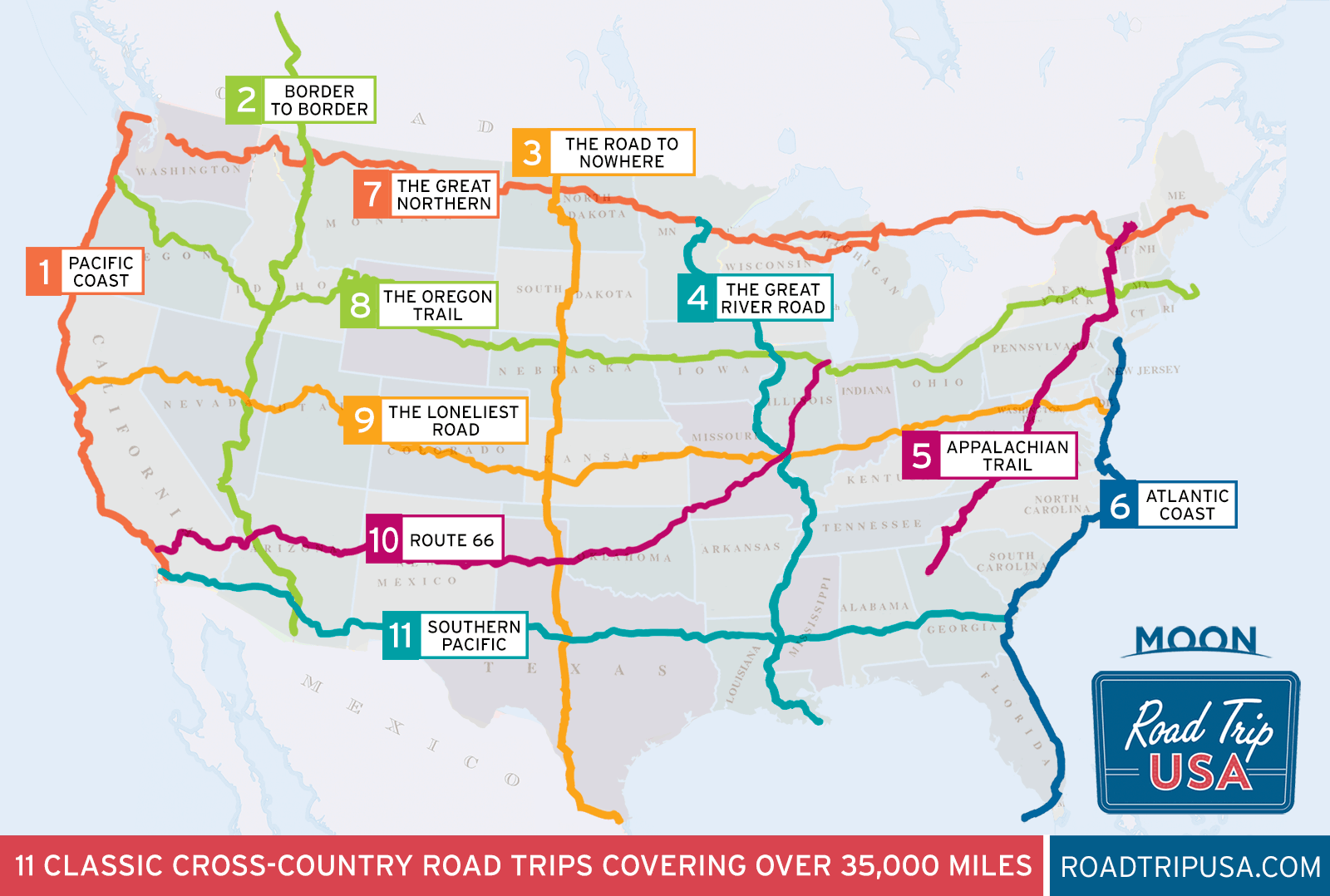
RULE n.1 – Check your vehicle
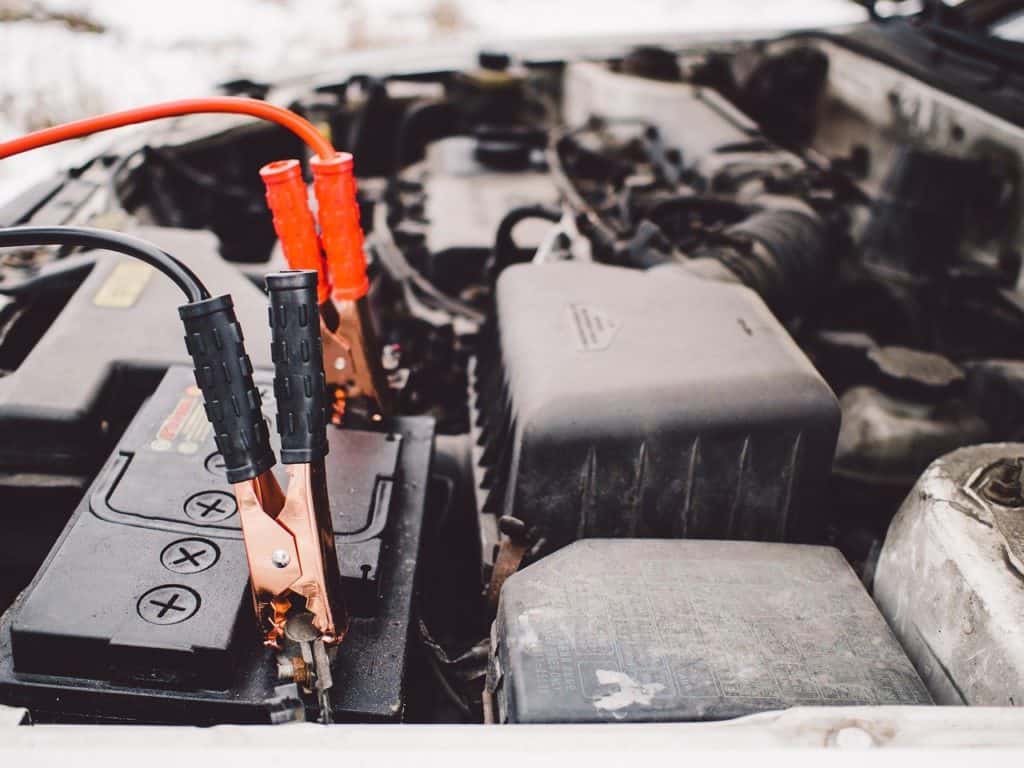
Your vehicle should be roadworthy before you set out on your cross-country trip. About a week before you plan to leave, take your car in for a check of fluid levels, brakes, tires, and anything else which might cause you problems.
Nothing can spoil your cross-country road trip faster than being stuck somewhere you would rather not be stuck, waiting for your car to be repaired. Make sure your spare tire is fully inflated and that you have jumper cables, a jack, and any other items you might need in the event of a flat tire or car trouble.
Here is the full checklist:
- Fluids (oil + cooling)
- Spare wheel
- Windscreen wipers
- Wheels + tires
- Check for leaks
- Drive belts
- Wheel steering
To rent a car, you need a credit card
This is an unknown rule between newbies and also foreigners trying to rent a car in the U.S. Most car rental companies won’t rent you a car if you trying to pay by debit card or cash. A credit card is required!
Be ready for gas prices

Gas prices are on the rise these days and you definitely want to know where you can get it cheaper when you are doing a lot of miles.
Best 3 gas prices apps in the U.S.:
Don’t have a fixed plan but have a plan!
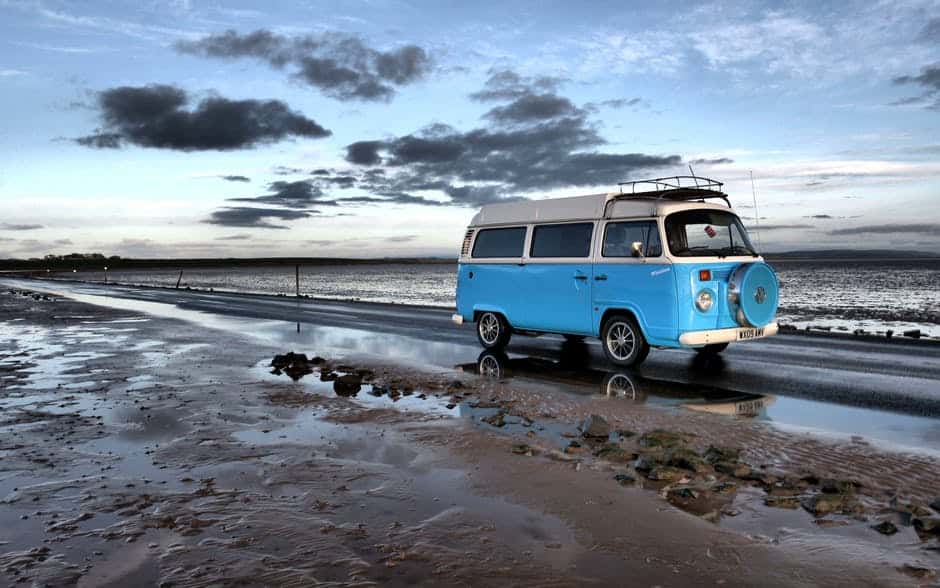
Even if you want to “free-spirit” it on your cross-country trip, having at least a loose plan can, in the end, make your trip much more enjoyable.
At a minimum, it’s usually a good idea to have a plan for where you will stay each night and have a list of the things you really do not want to miss – as opposed to the things you would like to see but could stand to miss.

Check potential trouble spots / Avoid traffic
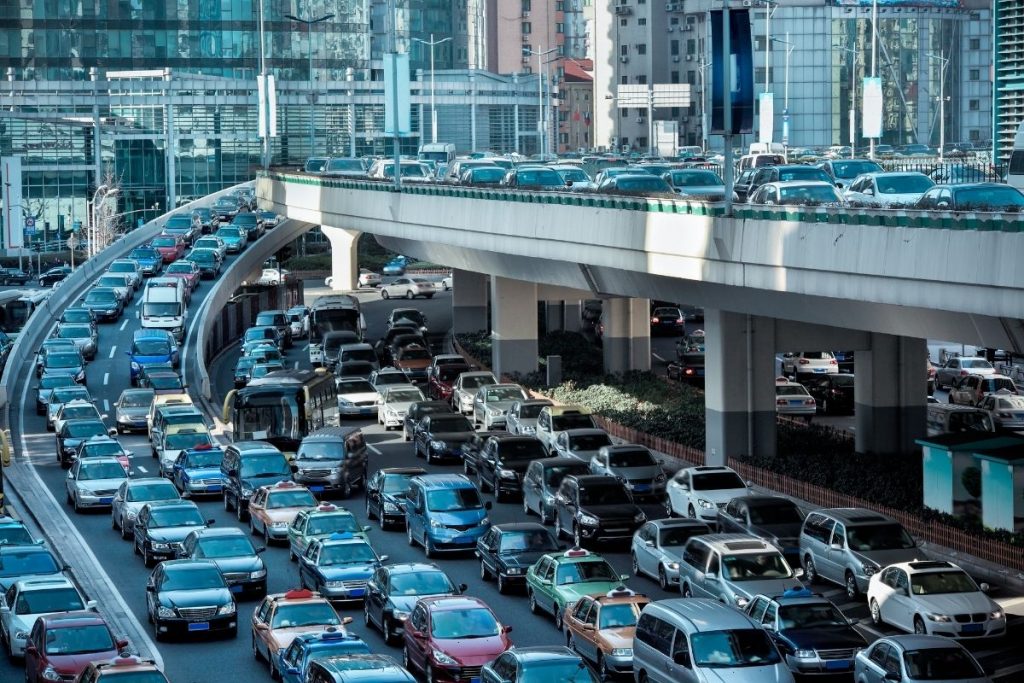
While you won’t want to over-plan your trip, it can be a good idea to anticipate any potential trouble spots.
Getting caught in rush-hour traffic in a large city will not improve the quality of your trip, so plan to avoid things like crossing the Hudson River on a Friday at five o’clock.
Have small bills for tolls ready
Nothing will send you into a panic like realizing you don’t have any cash handy when you’re approaching a toll booth.
Eliminate the risk of this happening by keeping some small bills in the side compartment or between the seats, where the driver can easily reach them.
Become a member of a roadside service
If you are not already a member of a roadside service like AAA , consider joining one before you take off to unknown places.
The simple law of averages says if you take enough road trips you will eventually end up stranded on the side of the road in Podunk, USA. You can avoid a lot of hassle as well as potential dangers when you have that handy 800 number to connect you to reputable towing and repair services.
Have your documents ready
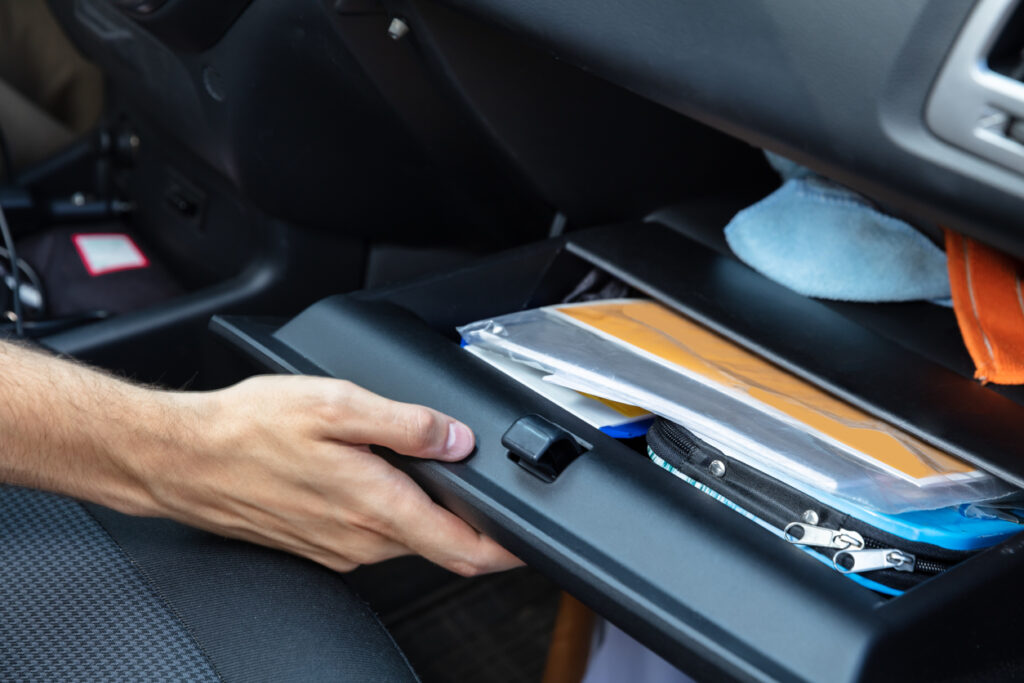
Make sure you have all the necessary documentation in an easily accessible place before you start out on your cross-country road trip.
An up-to-date insurance card, a valid driver’s license, and your vehicle registration are all crucial documents to have (not only for a road trip but all the time).
Alcohol laws differ between states
While this next tip is something few people consider, if you or any other adults on the trip plan to enjoy a few relaxing alcoholic beverages along the way, you need to have a good idea of how alcohol laws differ between states .
The last thing you want is to end up with a DUI in an unfamiliar state—not only could such a thing really put a damper on your road trip, but the long-term consequences could also be much more serious than you imagine.
Check out also some cheap motels for a road trip in USA! They might come handy if you need to take a break for night or two.
Make sure you have your tickets sorted!
If you have any outstanding traffic tickets or parking tickets make sure you take care of those before you start out on your cross-country trip.
The last thing you want is to have your trip interrupted by ending up in a police station because you forgot to pay a traffic ticket.
Consider camping
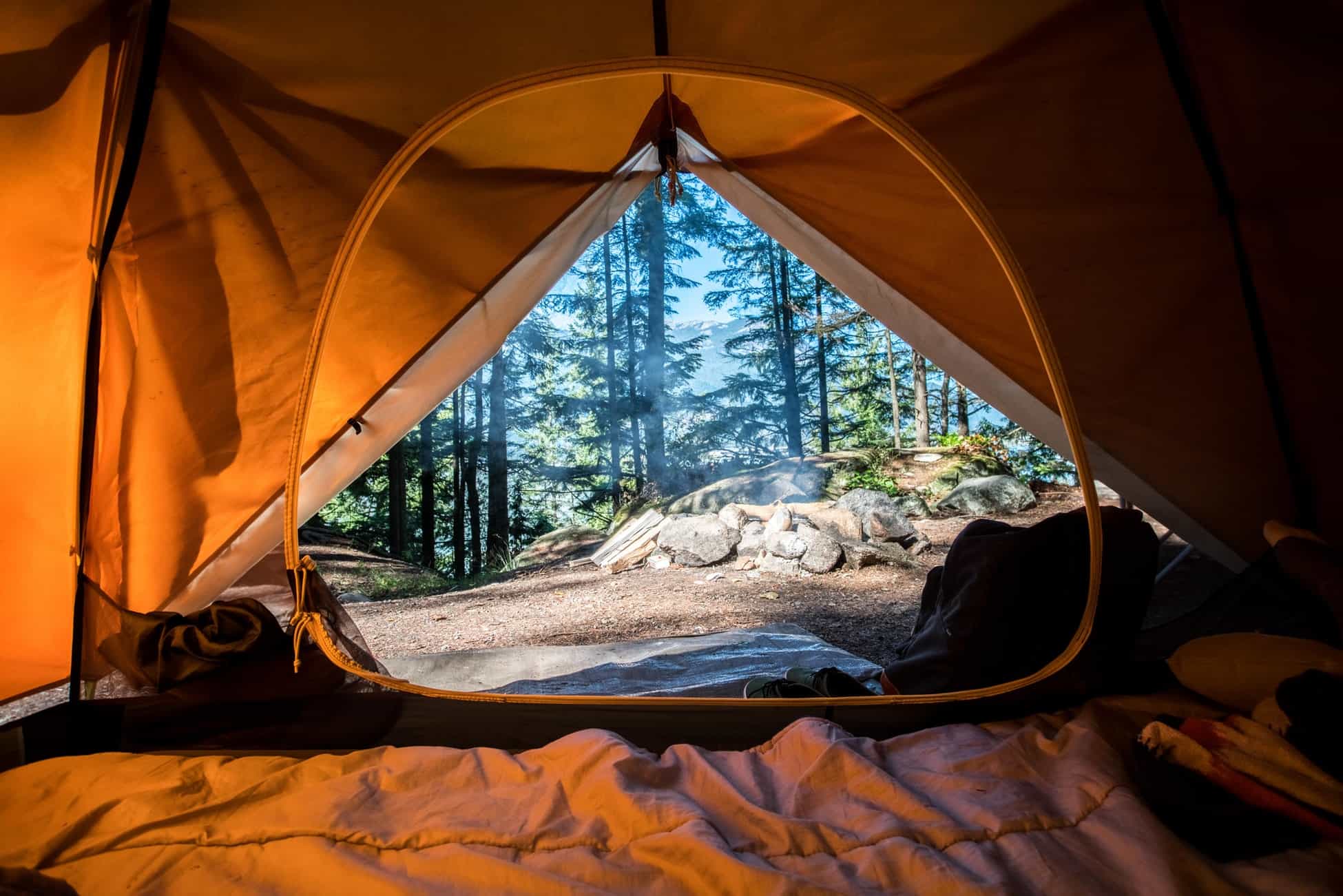
When traveling in the USA , camping is one of the best ways to save money when traveling. Plus, it allows you to see so many parts of the country as there are campgrounds near the most popular attractions and in nearly any tourist destination.
When planning your cross-country adventure it’s important to plan ahead to find campgrounds near the places you want to visit. Most modern campgrounds include amenities to help make your stay comfortable. Some even have small cabins that can save money over staying in a hotel.
Staying in a campground can be a great opportunity for adventure as most have outdoor amenities and fun things to do on-site, while still providing you with the comforts of restrooms, running water, and internet connectivity.
Camping also gives you flexibility with time and budget since you have so many options on where to stay and can compare prices based on the campgrounds in your desired area.
Get a proper road trip playlist
Imagine the perfect road trip scene: the windows are down, the cool breeze is whipping by, the mountains or plains fall away on either side of the open road.
But what’s still missing? The tunes, of course! No road trip is complete without perfect highway music. Make a playlist with classic road trip hits , from the Eagles’ “Take it Easy” to Willie Nelson’s “On The Road Again.” Be sure to download it before you leave, since you’re bound to find yourself without cell service.
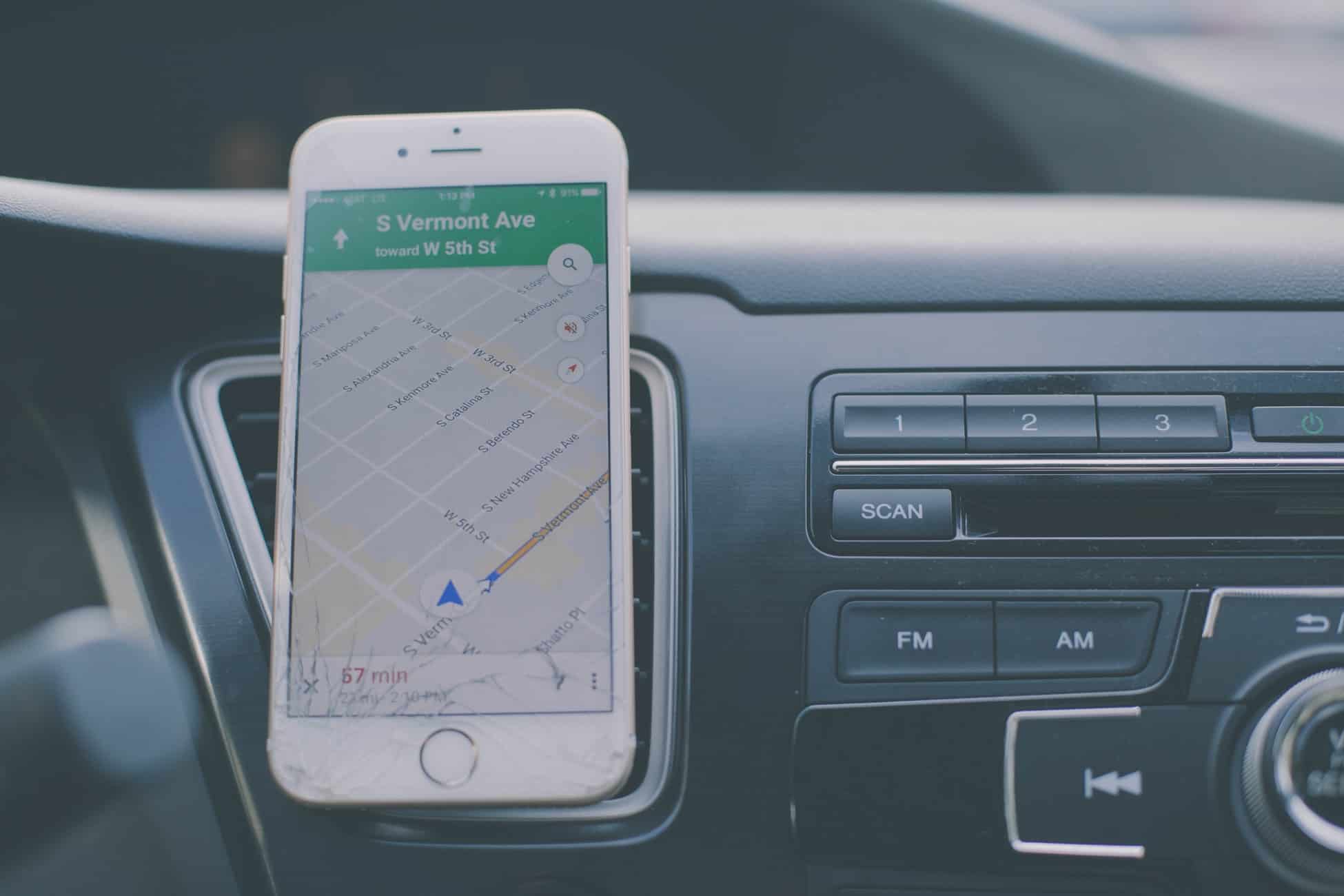
These unplanned adventures are when it’s most beneficial to utilize GPS navigation services. Using a navigation app on your phone can be one of the easiest ways to get around since you likely keep your phone close all the time.
When using your phone for navigation it’s important to always have at least one charging cable with you. Many people prefer to travel with a few extra charging spots and cables to avoid running out of battery. You might also want to keep a few power banks with you, just in case.
If you’re going to be spending time outdoors you may also want to invest in a solar charger that has a USB connection.
Lastly, check with your cell phone DATA service provider before your trip to ensure you have mobile data and will be able to use your navigation services throughout your cross-country adventure.
Holidays and opening hours of national Parks
When visiting national parks it’s essential to check the opening hours during your planning process. The hours of most national parks will vary based on the season and the day of the week. Be sure to check this information ahead of time before your visit so you can plan accordingly.
If you want to take advantage of any of the special amenities or demonstrations offered by many national parks, be sure to know the hours and days those events are offered.
It’s also recommended to be aware of bank holidays during your travels. Many attractions will follow bank holidays which often means closing on popular travel days.
You will go on hikes, get proper shoes!
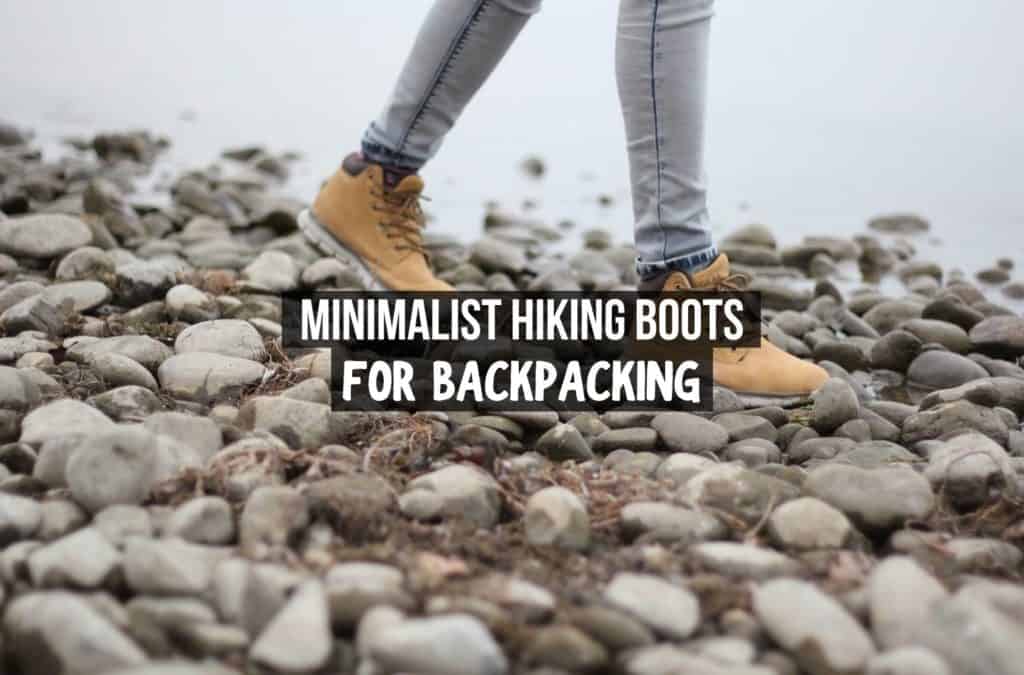
Perhaps the best part of any cross-country trip is the remarkable natural beauty you’ll pass through.
From mountains to forests, deserts to plains, the pure variety of landscapes in the continental U.S. is enough to whet the appetite of even a casual nature-lover.
As you pass through this gorgeous scenery, you’re going to want to hike. Prepare for this by bringing along a decent pair of hiking shoes. Wearing uncomfortable footwear on a hike is a recipe for nasty blisters, while sandals can be dangerous.
With proper shoes , you can make sure you remember your hike for all the right reasons.
Day trip backpack
So your first priority when packing was probably to find a big enough suitcase for all your clothes and belongings. While this might be perfect for keeping all your things in one place, it shouldn’t be the only bag you take on your trip.
Don’t forget that your journey will be full of minor excursions, and you’re going to want to bring some items along for each separate adventure. Of course, you’re not going to bring your suitcase on a hike or city tour.
That’s why you need a reliable day trip bag that you can comfortably carry with you. A backpack or satchel is ideal.
Flashlight/lantern
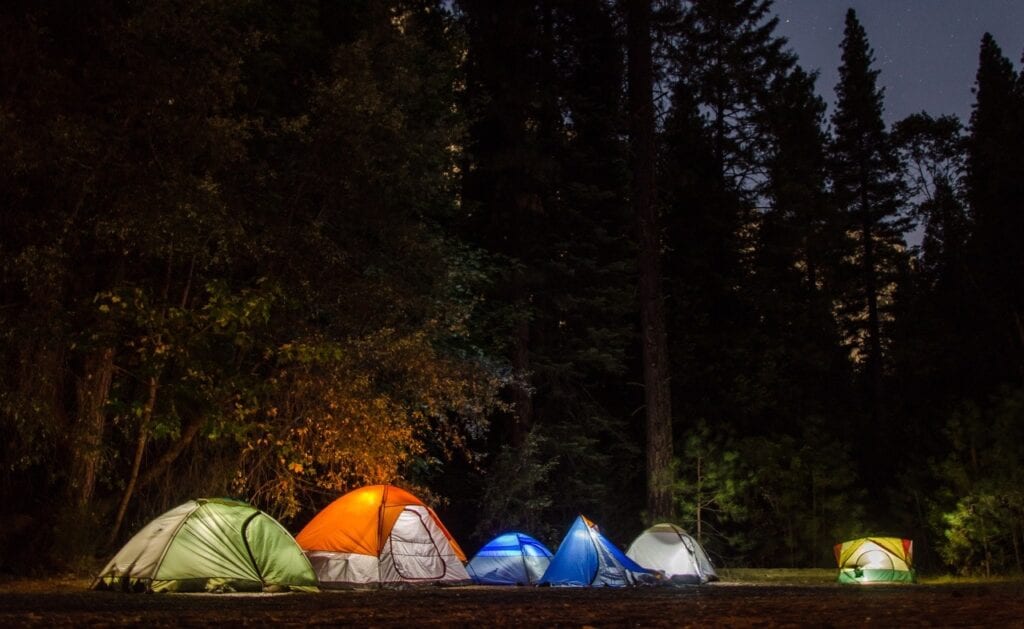
If you’re going to be camping, then a source of light is one hundred percent necessary. You never know when you’ll be delayed getting to a campsite, and setting up in the dark is nearly impossible.
The light also makes it a lot more fun to hang out at night, allowing you to read, play cards, or eat instead of just sitting around in the dark. Even if you’re not camping, a flashlight or lantern is still a good idea. You never know what type of situation you might find yourself in. In the case of any nocturnal emergency, you’ll want a flashlight you can count on (as opposed to your phone, which can die just when you most need a light).
Get a cooler!
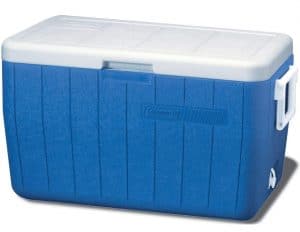
Plan to take a cooler with plenty of snacks and drinks! While nobody seems to know why traveling makes us hungrier!
Of course, there will be plenty of places to stop along the way for munchies, however having drinks, fruit and treats packed, can really cut down on the number of stops you make, especially if you have children.
Mosquitos can be a problem!
If you are planning your adventure in the summer months, you might encounter plenty of mosquitos. You wanna have your repellents always stocked and some mosquito nets if you are planning to camp.
Sunshades for side windows and windscreen
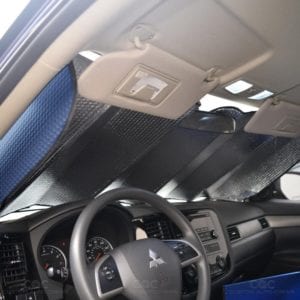
There is nothing worse than getting into a “burning car” when you are coming from a day hike or a walk. In the hot months, you can get some very high temperatures in US and the sun gets really strong.
If you’re planning to make a longer stop and there is no shade around, you definitely want to keep them up! Inspiring video by Traveling Lifestyle.
Finally, the most important thing you should know about taking a cross-country road trip is to have fun!
Don’t get caught up in your phone on your trip, rather put it away and take the time to really look at the scenery passing you by. Immerse yourself in the beauty of our nation, as you listen to your favorite road trip s0ngs and enjoy your journey.
We hope you found this article useful and we are glad you made it all the way down here. Feel free to submit a comment below with any tips on driving cross country in the USA that you think would be a great fit!
Great tips! Planning a cross-country road trip is thrilling, but prep is key. From routes to packing essentials, this guide’s got you covered for an unforgettable journey. 🚗🗺️
Moving cross country, this article helped remind us of what’s needed, plus the route maps at the beginning
It is important not to have fixed plans but one plan you need fix before starting the journey is your auto insurance plan. For example, my auto insurer Western Mass Auto Insurance had already placed state-to-state travel coverage but I needed to inform them of my travelling so they can better assist me about the plan.
Leave a Reply Cancel reply
Your email address will not be published. Required fields are marked *
Amtrak Guide
By train travelers for train travelers, how long does it take to travel across the u.s. by train.
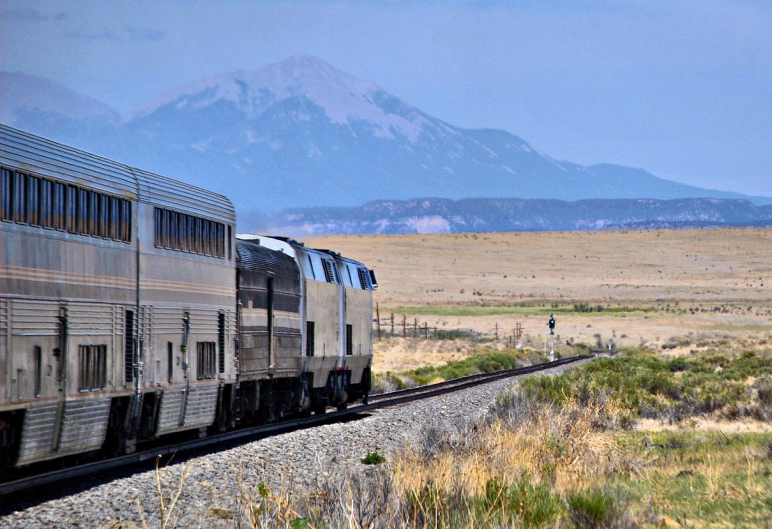
It’s a long trip if you want to travel across the United States by train. It takes between two and three days and multiple trains to travel coast to coast.
If you’re up for the adventure, you can also choose from multiple start and end cities based on your preferences, which are listed below. Additional options and current train schedules can be found via the Find Train feature on the Amtrak.com homepage (the below times may be subject to change).
Note that for the fastest and easiest trip, choose from the following cities:
- East Coast : New York City, Washington D.C. and Boston
- West Coast : Los Angeles, Emeryville (near San Francisco), Portland and Seattle
New York City to Los Angeles
Travel Time 62 hours
Layover Time 4.5 hours (Chicago)
Routes Lake Shore Limited and Southwest Chief
Description This cross-country trip is great if you’d rather travel through the desert instead of traveling through the Rocky Mountains. You’ll go through the Hudson River Valley after departing from New York City then travel near the Great Lakes in route to Chicago. After changing trains in Chicago, you’ll travel through the Midwest and Great Plains to mountains in southern Colorado. The last leg of the trip is through desert in New Mexico, Arizona and California.
Major cities on this trip:
- New York City
- Kansas City
- Albuquerque
- Los Angeles
Los Angeles to Washington D.C.
Travel Time 64 hours
Layover Time 4 hours (Chicago)
Routes Southwest Chief and Capitol Limited
Description This cross-country trip starts and ends in two beautiful Amtrak stations. You’ll see the Arizona Desert, Colorado mountains, Midwest farmland and Allegheny Mountains. Flagstaff is a stop on the route and the place to exit if you want to see the Grand Canyon. However, the trains that depart from Los Angeles stop in Flagstaff in the middle of the night.
- Washington D.C.
Portland or Seattle to Washington D.C.
Travel Time 65 hours
Layover Time 2 hours (Chicago)
Routes Empire Builder and Capitol Limited
Description The Pacific Northwest segment between Spokane and Portland is particularly scenic as you travel through the Columbia River Gorge. If you depart from Seattle, you’ll see Puget Sound instead. Other scenery highlights include Pacific Northwest forests, Montana Rocky Mountains and Great Plains. After traveling through the Upper Midwest you’ll arrive in Chicago. The layover there is short, so there is the possibility that you will miss the connection to the Capitol Limited train if the Empire Builder is running behind schedule. The last part of the journey is through the Alleghany Mountains and along one of the oldest railroad corridors in the United States.
Major cities on this route:
- St. Paul-Minneapolis
- Portland or Seattle
Boston to Los Angeles
Travel Time 65.5 hours (from Back Bay) Layover Time 4.5 hours (Chicago)
Major Stops :
Boston to Seattle or Portland
Travel Time 68.5 hours Layover Time 5 hours (Chicago)
Routes Lake Shore Limited and Empire Builder routes
Description Trains travel near the Great Lakes through New York and Ohio to Chicago. If Chicago arrival is on time, you’ll have a few hours to sightsee before getting on the Empire Builder for a trip through the Upper Midwest, Great Plains, Montana Rocky Mountains and forests of the Pacific Northwest. If you choose Seattle as your final destination, you’ll see Puget Sound. If you travel instead to Portland, you’ll travel through the Columbia River Gorge.
Seattle or Portland to New York City
Travel Time 66 hours (Chicago)
Layover Time Almost 5 hours
Routes Empire Builder and Lake Shore Limited
Description Empire Builder trains travel through the Pacific Northwest forests on the way to the Montana Rocky Mountains. If you depart from Seattle, you’ll see Puget Sound, or enjoy the scenery in the Columbia River Gorge with a Portland departure. After leaving the mountains, it is a long trip across the Great Plains and Midwest. In Chicago, you’ll transfer trains and travel near the Great Lakes and along the Hudson River to reach New York City.
- Portland and Seattle
- St. Paul-Mineeapolis
New York City to Portland or Seattle
Travel Time 66 hours
Routes Lake Shore Limited and Empire Builder
Description After departing from New York City, you’ll travel through the Hudson River Valley to Upstate New York and cities near the Great Lakes. In Chicago, you’ll have some time to sightsee before boarding the Empire Builder. This train travels through the Upper Midwest, Great Plains and through the Montana Rocky Mountains near Glacier National Park. The trip ends in forests of the Pacific Northwest. You’ll see Puget Sound if you travel to Seattle. Or travel to Portland through the Columbia River Gorge.
Washington D.C. to San Francisco
Travel Time 70 hours (plus 30 minutes to reach San Francisco from train station)
Layover Time 5 hours (Chicago)
Routes Capitol Limited and California Zephyr
Description You’ll travel through multiple mountain ranges on this trip, including Allegheny Mountains, Rocky Mountains and Sierra Nevada. The scenery is amazing. Other sights include Midwest farmland and Great Plains. Trains terminate in Emeryville, California. If you book San Francisco as your final destination, an Amtrak bus shuttle will take you into the city. Otherwise you can arrange for taxi or rideshare in Emeryville.
- Salt Lake City
- San Francisco (via Emeryville)
Boston to San Francisco
Travel Time 74.5 (plus an additional 30 minutes to reach San Francisco from the train station)
Routes Lake Shore Limited and California Zephyr
Description Trains depart Boston and travel near the Great Lakes to Chicago. You’ll transfer to the California Zephyr for a journey across the Great Plains then have an amazing trip through the Colorado Rocky Mountains and the Sierra Nevada. Emeryville is the final train station. Bus shuttles, rideshare and public transportation are options for continuing on to San Francisco.
New York City to San Francisco
Travel Time 72 hours (3 days, plus 30 minutes to travel from the train station to San Francisco)
Layover Time Almost 4 hours
San Francisco to New York City
Travel Time 72 hours (plus 30 minute commute from San Francisco to the train station)
Layover Time 6.5 hours
Routes California Zephyr and Lake Shore Limited
Description See the Sierra Nevada and Rocky Mountains on this stunning trip from San Francisco. Trains depart from Emeryville and the scenery is amazing until Denver. You’ll have a long layover in Chicago, so there is time to sightsee before continuing east. The Lake Shore Limited is the fastest route to NYC, but you can also get on a Cardinal train if you want to see the New River Gorge in West Virginia. The Cardinal will add about four more hours of total trip time, but the layover is only three hours in Chicago.
If you book tickets on the Lake Shore Limited, you’ll travel near the Great Lakes in Indiana, Ohio and New York and then head south along the Hudson River to reach New York City.
More Information
- 7 things to pack for an Amtrak trip
- 5 things to know when traveling on Amtrak
- Amtrak’s 15 long-distance routes and the places they go
- Already have a WordPress.com account? Log in now.
- Subscribe Subscribed
- Copy shortlink
- Report this content
- View post in Reader
- Manage subscriptions
- Collapse this bar

How Long Does it Take to Drive Across Canada (+ Itineraries)
Are you considering driving across Canada with your family but not sure it’s a good idea? You’re probably wondering how long it takes to drive across Canada.
We get it. Driving 5,000+ kilometers with yelling kids in the back seats might not seem like the best vacation idea. But with the right itinerary and expectations, you’ll be all set.
I drove across Canada twice with my kids, once with the kids and my husband, and once solo with the kids. I know, right…. That’s crazy. But honestly, I would do it again.
Traveling to Canada? Get your Canada Road Trip Guide for Families
In this article, I’m going to tell you:
How long does it take to drive across Canada?
- How many days should you plan to drive across Canada?
- A few tips to make the trip more fun
But before we share with you our driving across Canada tips…
Why consider driving across Canada?
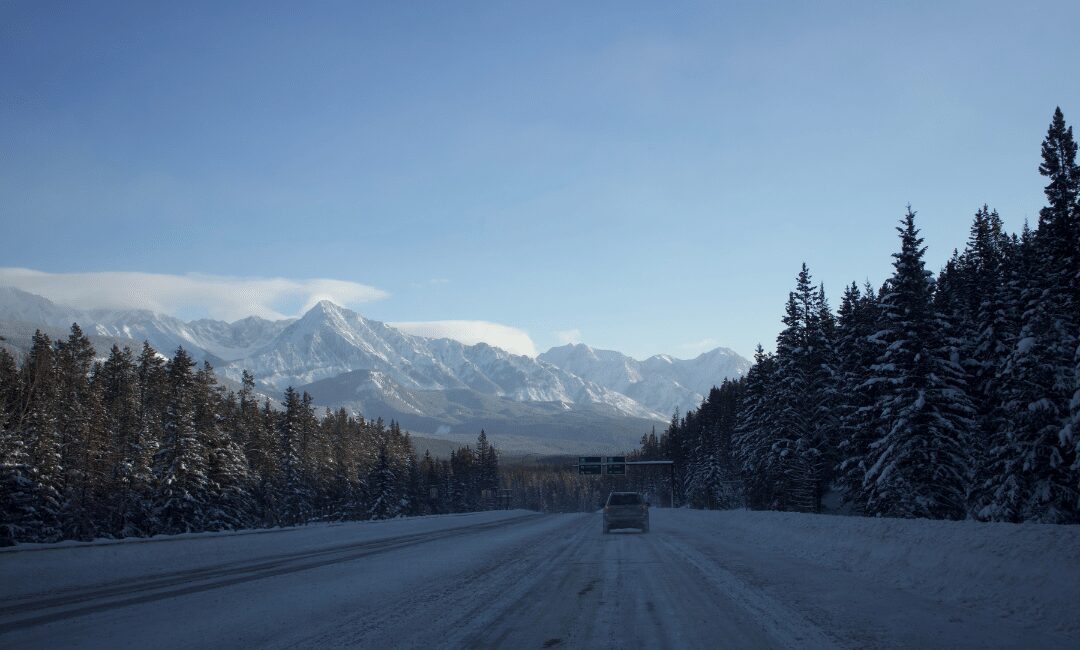
Need help planning your road trip? Let me help you plan your custom itinerary .
Why would any family want to drive 5,000 km all across Canada each way? With two toddlers, doesn’t it sound like a little lot insane???
But we did it, from Quebec City to Vancouver Island (coast to coast) and many other travelling families have done it too! Plus, we all (mostly) loved it. Road-tripping with kids brings so much flexibility and it’s a great way to explore a beautiful and vast country and to travel coast to coast across Canada.
💡 No time to read the entire article? Here is a quick recap of a road trip across Canada:
- How long to drive across Canada? It’s about 5,000 km to drive from Montreal to Vancouver without many detours. It takes a minimum of 7 to 10 days to drive across Canada (without seeing much along the way). If you start in the Maritimes, it would be a 7,000+ km road trip.
- What is the cheapest way to travel across country with family? The cheapest way to drive across Canada would be camping.
- How long to drive across Ontario? Driving across Ontario is about 2,000 km and will take you at least 3 days.
- What is the best time of year to drive across Canada? You can drive across Canada all year round, but from May to October is the ideal time. You’ll get better weather and driving condition.
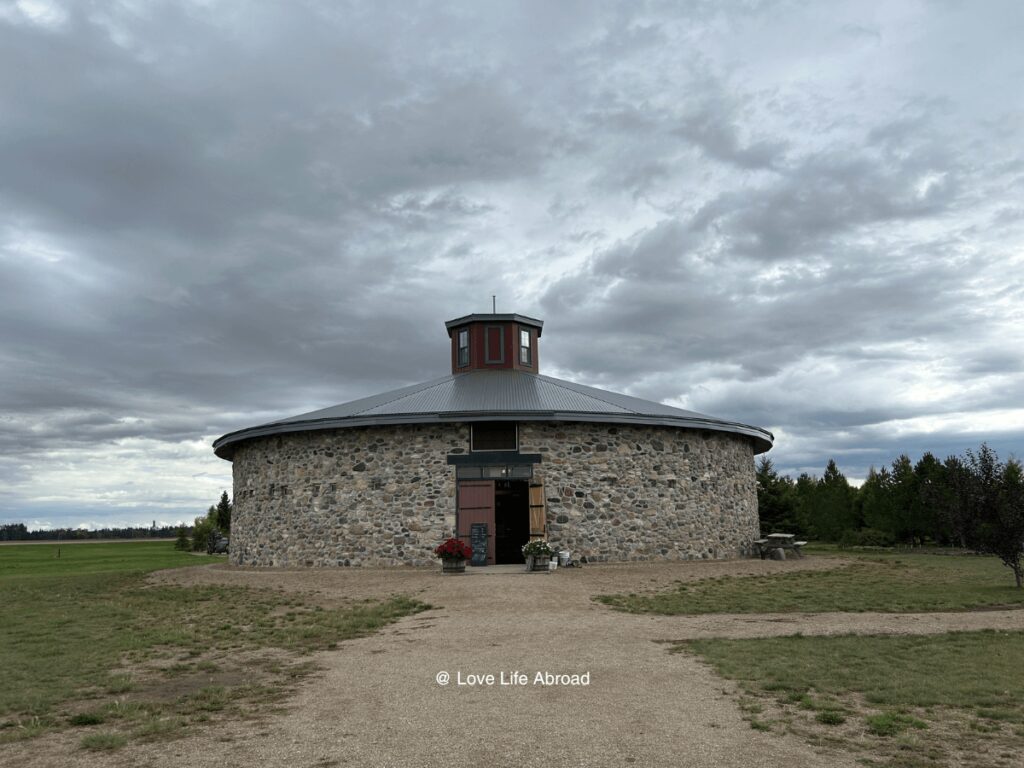
The Trans-Canada Highway is the world’s longest national highway , with a total length of 7,821 km. It goes from Victoria, BC to St.John’s, NF .
In this guide, we’ll concentrate our examples and tips from Quebec to British Columbia, which is about 5,00 km+ of the 7,821 km of the Trans-Canada Highway.
You might enjoy those itineraries:
- Ontario to BC itinerary
- Northern Ontario itinerary
- Toronto to Halifax itinerary
How many days to drive across Canada?
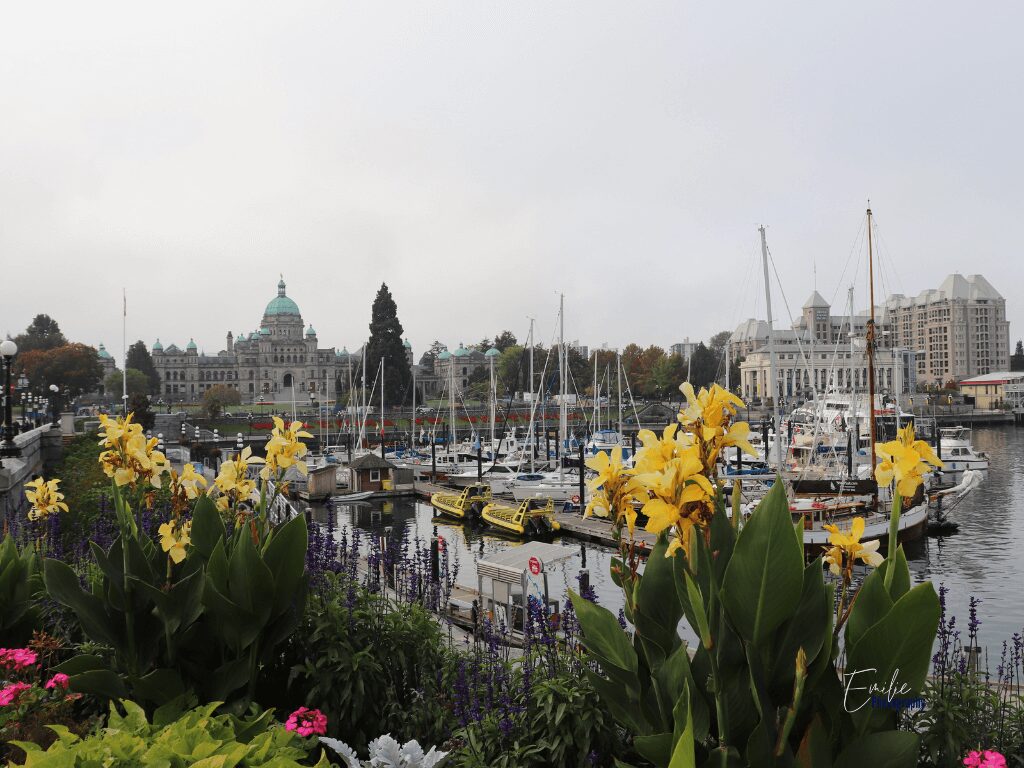
People have done it. They drove an average of 800-1000 km daily and crossed Canada in less than 5-7 days. But I’ll be honest here, if the goal is only to get to the Rockies and Western Canada as soon as possible, you might want to reconsider driving across Canada.
It may be a better idea to fly to Calgary or Vancouver and rent a car or rent an RV to make a short road trip.
💡 Thinking of visiting the Canadian Rockies? Read our guide to plan your trip to Banff and the Rockies.
Now, how many days to drive across Canada will depend on a few factors, mostly:
- The time you have to do the trip
- The amount of kilometers you’re willing to travel per day
- Who you’re traveling with
Also, when planning to travel across Canada with kids, remember that even if the name of the main road is trans-Canadian highway , it doesn’t mean the speed limit is always 100 km/h and a 4-lane highway.
For example, in Northern Ontario , you’ll often drive on windy 1-lane roads with a speed limit of 80 km/h and limited visibility, so it can be hard to pass slow trucks. It’s not uncommon to drive at 50 km/h for more than one hour if you’re caught behind a commercial truck.
It’s the same on Vancouver Island . It’s a single lane in each direction, and it gets crowded. That means even 50 km may take a while to drive.
Honestly, there’s no right or wrong way to do this. You need to know what kind of traveling family you are so you can determine how long you’ll make it between each stretch.
The shortest time to drive across the country, from Montreal to Western Canada:
- Montreal – Sault Ste Marie: 991 km
- Sault Ste Marie – Thunder Bay: 700 km
- Thunder Bay – Winnipeg: 705 km
- Winnipeg – Swift Current: 818 km
- Swift Current – Banff: 638 km
And there you are, in the Canadian Rockies after 5 long days of driving .
💡 Alternative route : Montreal – Cochrane – Thunder Bay
The drive from Montreal to Thunder Bay via Timmins and Cochrane is a but shorter, but I still recommend driving along the Great Lakes. It’s a beautiful drive, with many things to see along the way
💡 PRO-TIP : If you want to make the drive even quicker, you could skip Northern Ontario and drive through the North of the USA along the Great Lakes Alternative route : Montreal – Sault Ste-Marie (cross the Canada-USA border) – Duluth (MN) – Minot (ND) (cross the USA-Canada border) – Calgary.
The quickest way – while still enjoying the drive:
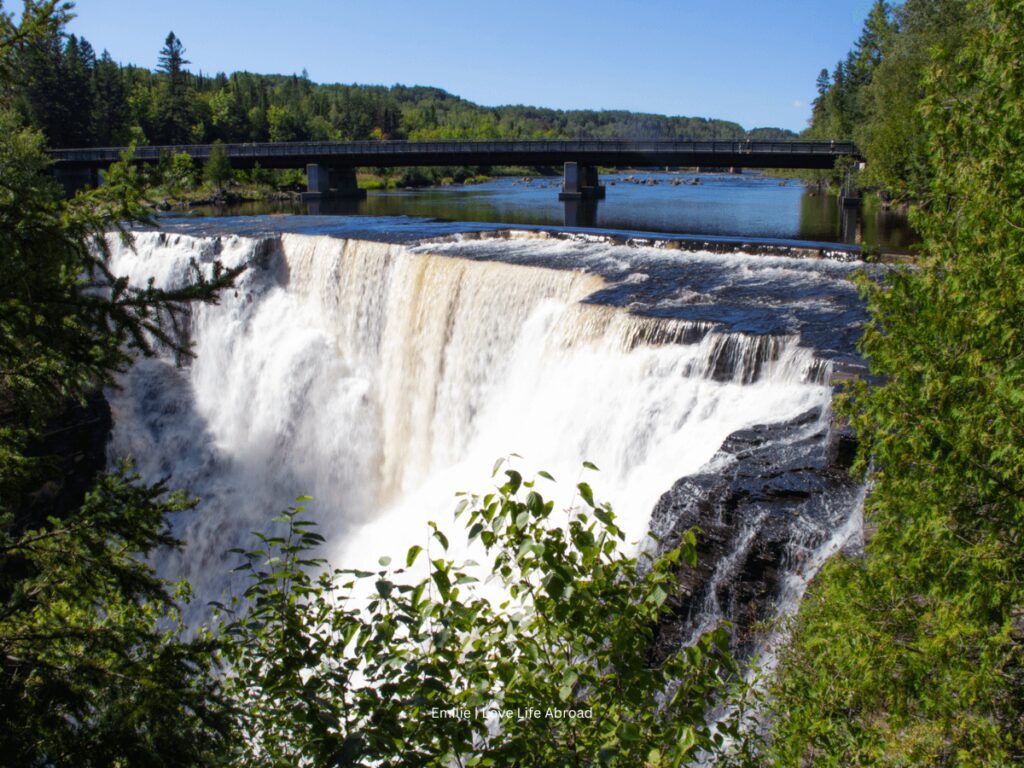
So, while the first itinerary quickly arrives in Western Canada, you won’t have time to enjoy anything since you’ll drive between 700 to 1000 km daily. So here is an alternative route that is a bit longer but allows you to enjoy the little more the drive:
- Montreal to North Bay: 557 km
- North Bay to Sault Ste Marie: 435 km
- Thunder Bay to Kenora: 492 km
- Kenora to Brandon: 432 km
- Brandon to Moose Jaw: 437 km
- Moose Jaw to Medicine Hat: 395 km
- Medicine Hat to Banff: 416 km
With the itinerary, it takes you 8 days to drive from Montreal to Banff, but you have a bit more time to explore
The perfect time to drive across the country with kids:
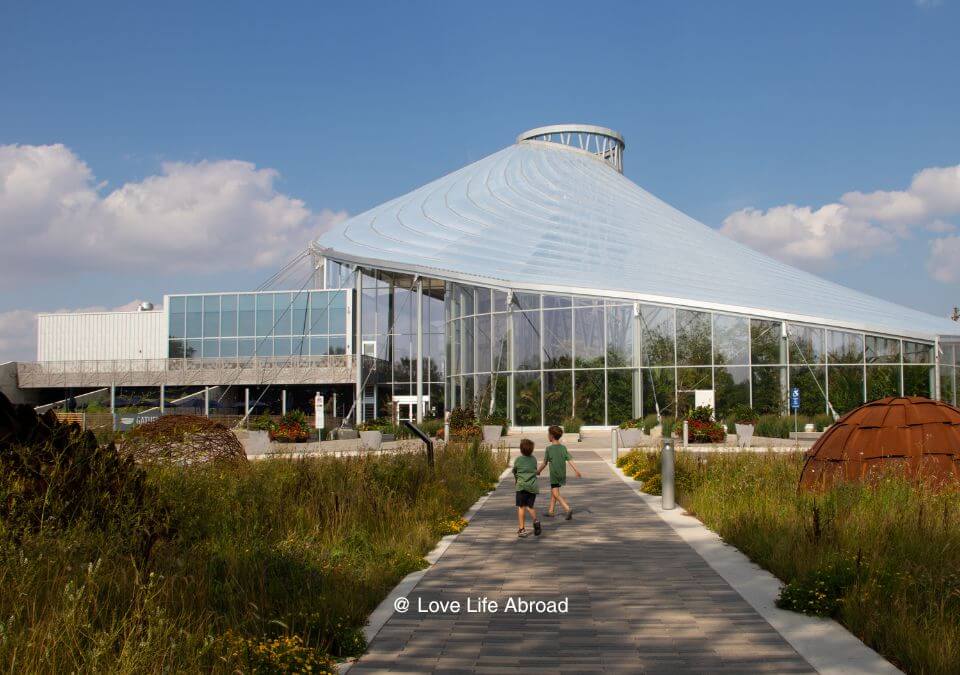
Now, if you’re traveling with kids, the second itinerary might still be a bit too much driving for the kids. Plus, you’ll be skipping places the kids will love. So here is an alternative itinerary. It’s longer but includes a lot of fun stops:
- Sault Ste Marie to Maraton: 410 km
- Marathon to Thunder Bay: 300 km
- Kenora to Winnipeg: 209 km
- Winnipeg to Indian Head: 503 km
- Indian Head to Swift Current: 319 km
- Swift Current to Brooks (or Dinosaur Provincial Park): 329 km
- Brooks to Banff: 312 km
With the itinerary, it would take you 10 days to get to Banff National Park with a lot of fun stops along the way.
💡 PRO-TIP Best Way to Road Trip with Kids? Typically with kids, it’s good to stop every now and let them play. A stop every 2 hours to do an activity, either a short hike, a playground or any site along the way, is a good rule.
Some of our favorite things to see on a road trip across Canada
A Canadian road trip will show you how huge the country is and how diverse is the landscape. There are many stops to do along the way, and the Prairies are surprisingly not as boring to drive through as you may have heard about. Here are our top 10 favourite things to see while driving across Canada:
- Go on a trail ride to the Algoma Canyon near Sault Ste Marie.
- Follow a French “voyageur” through time at Fort William Historical Park, in Thunder Bay, Ontario
- Grab lunch at The Forks in Winnipeg, Manitoba
- Take a day trip to Riding Mountain National Park in Brandon, Manitoba
- Enjoy a sandy beach in the Qu’Appelle Valley in Broadview, Saskatchewan
- Meet Scotty the T-Rex at the Royal Saskatchewan Museum in Regina, Saskatchewan
- Discover the badlands at Dinosaur Provincial Park in Brooks, Alberta
- Discover How the West Was Once at Heritage Park Historical Village in Calgary, Alberta
- Get transported in a fairytale at the Enchanted Forest in Revelstoke, British Columbia
- Eat some Fish & Chips at Fisherman’s Wharf in Victoria, British Columbia
Tips to help you make the most of your road trip across Canada

1. Decide how to drive across Canada
There are many ways to drive across Canada. It’s important to decide early on how to drive across Canada:
Are you thinking of using an RV/campervan or a regular car?
Using an RV or a campervan is a wonderful way to explore the wilderness of Canada (make sure the windows are clean so you get a good view). It can also be easier on the kids for the routine as you’ll always be sleeping in the same bed. Plus, in Northern Ontario , for example, there aren’t many hotels along the Great Lakes sections, but tones of campgrounds.
BUT if you are traveling in the high season, national parks and provincial parks campgrounds get booked early in the year (as soon as January), so you’ll need to plan your itinerary early on.
When driving across Canada with a regular car and sleeping in hotels, it’s easier to be more flexible with your itinerary . There are usually always vacancies in hotels.
💡 Did you know you could do an RV road trip in the Canadian winter? Make sure to read this story.
2. Get a road assistance membership
Whether it’s a CAA membership, a AAA membership or any other road assistance membership you may have, it can come up in handy.
You’ll be driving a lot, probably around 10,000 kilometres round-trip. It sadly increased a lot the chance of a car breakdown.
Spoiler Alert: It happens to us in the Canadian Prairies. Our car just stopped while I was driving. I was happy we got the CAA membership before hitting the road.
Plus, CAA and AAA offer great discounts for its members on different activities, restaurants and hotels all across Canada.
3. Download the GoWhee App (if you’re traveling with kids
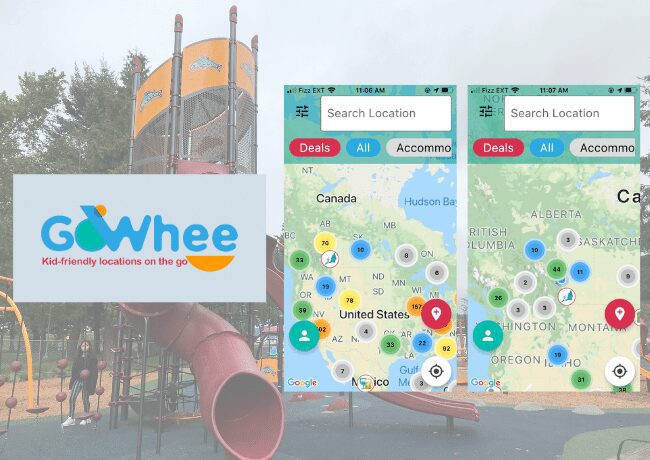
The GoWhee app is like what AllTrails is for all kids-friendly locations. On the app, you’ll find playgrounds, family hiking trails, restaurants with special kids’ features, hotels that were great with kids, activities, …
It’s a great app to help plan your family road trip across Canada, but it’s best used when searching for kid-friendly activities nearby you when the kids are starting a meltdown in the car.
4. Remember the Time Zones Change
This is a bit of an obvious one, but felt a little harder to track when we were driving. My husband was working from the road and had to take lots of meetings (usually earlier in the morning). Normally when we travel, this really isn’t a problem: you fly from Point A to Point B and you change time-zones over the course of a few hours.
But driving was different.
That’s because we had loads of things to plan, the car to pack/unpack, and an endless supply of energy from our two kids. It got a little difficult to keep track of time zone changes if it wasn’t at the top of our minds.
So if one of you is working, make sure to schedule yourself a notification or Google event for when you cross (Google usually asks you to update this information automatically, but schedule mix-ups still happen making Nathan miss a meeting or two (oops… 🤷♀️ )
5. Get a Family Discovery Pass for all Parks Canada National Parks
All national parks in Canada are maintained by Parks Canada and a permit is required to enter the parks. During your road trip, you’ll probably want to visit a few national parks, but probably also a few national historic sites. It may be a good investment to purchase the Family Discovery Card in advance, especially if you think you’ll spend around 7 days in Parks Canada grounds throughout the year.
The Family Discovery Pass costs 151$ and is valid for one year. It allows free access to all national parks and Parks Canada-managed historical sites. It also allows you faster access to parks, since you don’t have to wait in line and get out of your car to go buy your daily passes.
The Bar U Ranch National Historic Site (near Calgary, Alberta) and the Fisgard Lighthouse National Historic Site (near Victoria, British Columbia) are two of our favorite historical sites across Canada.
6. Pack lunches and snacks
Eating out every day with the family can also boost the travel budget. It’s always good to have snacks when travelling with kids . Packing a lunch and stopping at grocery stores instead of restaurants will not only save you money but will allow you to have more time to do actual activities.
We try to coordinate lunch with a playground stop or just before or after a hike, where we can easily find a picnic table. The kids usually prefer it to the restaurant because they can run around
Final thoughts: How long does it take to drive across Canada
We really hope you enjoyed reading our driving across Canada tips. Honestly, there’s no right or wrong way to plan everything out. You need to know how you and your family can safely get from point A to point B.
And, ideally, you’ll do this in a way that isn’t too exhausting. But now we want to hear from you! Do you have any other tips for planning long road trips? Let us know in the comments section or on Instagram .
Nathan was born and raised in California. He met his wife on his first trip abroad in Ischia, Italy, and has been wandering around ever since! He enjoys writing, playing music, reading, and pretends to watch less Netflix than he actually does.
Man traveling across country on his horse-drawn carriage for 5th time
CHEYENNE, Wyo. ( KGWN /Gray News) - A horse logger from Montana is traveling across the United States in a carriage for what will be the fifth time.
Lee the Horselogger first left his hometown of East Glacier, Montana, on Aug. 6, 2006, to travel across the country.
He would make the same journey another three times before this year.
“I travel to see nursing homes to meet people, go to schools, I do my show and tell, this is a horse, you know a lot of people have never seen a horse,” he said.
Lee is now making his fifth trip across the continental United States with his horse Jessie. They most recently made it through Cheyenne in early May.
Lee said he has made the journey multiple times because he is 63 years old and doesn’t have a family to tie him down.
“So I figured, why the hell not, see what goes on in the world,” he said.
On a trip last September, Lee’s original carriage became stuck in an accident. But that didn’t stop him from planning his fifth cross-country trip this year.
Together, Lee and Jessie only travel around 3 mph. He said people giving him the space to travel is usually what makes his day.
“That’s the biggest issue for me, just give me enough room, I’m driving but also I’m like anybody who’s driving,” he said.
Lee is currently on the way to Boston, Massachusetts. While they have a long way to go Lee said the experience is “one he will never forgo.”
Copyright 2024 KGWN via Gray Media Group, Inc. All rights reserved.

2 charged in shooting murder of Longview businessman

Eustace man accused of leading gang members to murder Arp motorcyclist in 2020

Woman accused of shooting husband after catching him cheating on her, police say

Gregg County law enforcement officials seen entering medical office of accused murderer’s son

First Alert Weather Days declared for Sunday into Monday morning
Latest news.

Man gets boat painted on fence that city made him put up to hide it

Man who had boat mural painted on fence says he's 'not a rule-breaker'

Dozens arrested as police clear Pro-Palestine encampment at University of Pennsylvania

Michael Cohen is next on witness stand when Trump hush money trial resumes

Quintuplets all graduating from the same college on the same day
Days Calculator: Days Between Two Dates
How many days, months, and years are there between two dates?
Need some help?

Time & Date Calculator App for iOS
See how long remains before a deadline or exactly when those 30 days are up.

Calendar with Logo (PDF)
Add your company logo to our printable calendars.

Date Calculator API
Find a specific business date and calculate the working days in a given period.
Help and Example Use
- Some typical uses for the Date Calculators
API Services for Developers
- API for Business Date Calculators
Date Calculators
- Time and Date Duration – Calculate duration, with both date and time included
- Date Calculator – Add or subtract days, months, years
- Weekday Calculator – What day is this date?
- Birthday Calculator – Find when you are 1 billion seconds old
- Week Number Calculator – Find the week number for any date
Related Links
- Calendar & Holidays Overview – Explore calendar tools
- Calendar Generator – Create a calendar for any year
- The World Clock – Current time all over the world
- Countdown to Any Date – Create your own countdown
- Skip to main content
- Keyboard shortcuts for audio player
South looks north, as solar storm brings auroras

Geoff Brumfiel

The solar flare as captured by NASA's Solar Dynamics Observatory on Thursday. The flare has triggered a severe geomagnetic storm watch for the first time in nearly 20 years. AP hide caption
The solar flare as captured by NASA's Solar Dynamics Observatory on Thursday. The flare has triggered a severe geomagnetic storm watch for the first time in nearly 20 years.
Planet Earth is getting rocked by the biggest solar storm in decades.
Late Friday, the National Oceanic and Atmospheric Administration declared that the Earth was experiencing a G5, or "Extreme," geomagnetic storm. This is the first G5 storm to hit the planet since 2003.
NOAA Issues First Severe Geomagnetic Storm Watch Since 2005

- LISTEN & FOLLOW
- Apple Podcasts
- Google Podcasts
- Amazon Music
- Amazon Alexa
Your support helps make our show possible and unlocks access to our sponsor-free feed.
NOAA warns several waves of flares will slam into the Earth over the next few hours and days, potentially disrupting communications and navigation, triggering power outages and damaging satellites. The 2003 event briefly knocked out power in part of Sweden and damaged electrical transformers in South Africa.
NOAA's Space Weather Prediction Center says that this latest storm may induce auroras visible as far south as Northern California and Alabama.
On social media, posters were putting up photos of bright auroras visible across Russia , Scandinavia , the U.K . and continental Europe . Some reported seeing the aurora as far south as Mallorca, Spain .
my cat just experienced the aurora borealis, one of the world's most radiant natural phenomena... and she doesn't care pic.twitter.com/Ee74FpWHFm — PJ (@kickthepj) May 10, 2024
The source of the solar storm is a cluster of sunspots on the sun's surface that is 17 times the diameter of the earth. The spots are filled with tangled magnetic fields that can act as slingshots, throwing huge quantities of charged particles towards our planet. These events, known as Coronal Mass Ejections, become more common during the peak of the Sun's 11-year solar cycle.
Usually, they miss the Earth, but this time, NOAA says several are headed directly towards our planet.
Extreme (G5) geomagnetic conditions have been observed! pic.twitter.com/qLsC8GbWus — NOAA Space Weather Prediction Center (@NWSSWPC) May 10, 2024
"We have high confidence that a series of coronal mass ejections ... are directed right towards Earth," says Shawn Dahl, service coordinator for the Space Weather Prediction Center told reaporters early Friday.
NOAA's GOES-16 satellite captured a flare erupting occurred around 2 p.m. EDT on May 9, 2024.
While they expect the storm to be large, there's still a lot of uncertainty about what the other effects could be, Dahl says.
"I wouldn't want to speculate on that," Dahl says.
Shocking problems
The most disruptive solar storm ever recorded came in 1859. Known as the "Carrington Event," it generated shimmering auroras that were visible as far south as Mexico and Hawaii. It also fried telegraph systems throughout Europe and North America.
While this geomagnetic storm will not be as strong, the world has grown more dependent on electronics and electrical systems. Depending on the orientation of the storm's magnetic field it could induce unexpected electrical currents in long-distance power lines — those currents could cause safety systems to flip, triggering temporary power outages in some areas.

Stronger activity on the sun could bring more displays of the northern lights in 2024
The storm is also likely to disrupt the ionosphere, a section of Earth's atmosphere filled with charged particles. Some long-distance radio transmissions use the ionosphere to "bounce" signals around the globe, and those signals will likely be disrupted. The particles may also refract and otherwise scramble signals from the global positioning system, according to Rob Steenburgh, a space scientist with NOAA. Those effects can linger for a few days after the storm.

What Causes The Northern Lights? Scientists Finally Know For Sure
Steenburgh says it's unclear just how bad the disruptions will be. While we are more dependent than ever on GPS, there are also more satellites in orbit. Moreover, the anomalies from the storm are constantly shifting through the ionosphere like ripples in a pool. "Outages, with any luck, should not be prolonged," Steenburgh says.
The radiation from the storm could have other undesirable effects. At high altitudes, it could damage satellites, while at low altitudes, it's likely to increase atmospheric drag, causing some satellites to sink toward the Earth.
The changes to orbits wreak havoc, warns Tuija Pulkkinen, chair of the department of climate and space sciences at the University of Michigan. Since the last solar maximum, companies such as SpaceX have launched thousands of satellites into low Earth orbit. Those satellites will now see their orbits unexpectedly changed.
"There's a lot of companies that haven't seen these kind of space weather effects before," she says.
The International Space Station lies within Earth's magnetosphere, so its astronauts should be mostly protected, Steenburgh says.
In a statement, NASA said that astronauts would not take additional measures to protect themselves: "NASA completed a thorough analysis of recent space weather activity and determined it posed no risk to the crew aboard the International Space Station and no additional precautionary measures are needed," the agency said late Friday.

People visit St Mary's lighthouse in Whitley Bay to see the aurora borealis on Friday in Whitley Bay, England. Ian Forsyth/Getty Images hide caption
People visit St Mary's lighthouse in Whitley Bay to see the aurora borealis on Friday in Whitley Bay, England.
While this storm will undoubtedly keep satellite operators and utilities busy over the next few days, individuals don't really need to do much to get ready.
"As far as what the general public should be doing, hopefully they're not having to do anything," says Dahl. The largest problem could be a brief blackout, so keep some flashlights and a radio handy, he says.
I took these photos near Ranfurly in Central Otago, New Zealand. Anyone can use them please spread far and wide. :-) https://t.co/NUWpLiqY2S — Dr Andrew Dickson reform/ACC (@AndrewDickson13) May 10, 2024
And don't forget to go outside and look up, adds Steenburgh. This event's aurora is visible much further south than usual.
A faint aurora can be detected by a modern cell phone camera, he adds, so even if you can't see it with your eyes, try taking a photo of the sky.
The aurora "is really the gift from space weather," he says.
- space weather
- solar flares
- solar storm
- Share full article
Advertisement
Supported by
Solar Storm Intensifies, Filling Skies With Northern Lights
Officials warned of potential blackouts or interference with navigation and communication systems this weekend, as well as auroras as far south as Southern California or Texas.

By Katrina Miller and Judson Jones
Katrina Miller reports on space and astronomy and Judson Jones is a meteorologist.
A dramatic blast from the sun set off the highest-level geomagnetic storm in Earth’s atmosphere on Friday that is expected to make the northern lights visible as far south as Florida and Southern California and could interfere with power grids, communications and navigations system.
It is the strongest such storm to reach Earth since Halloween of 2003. That one was strong enough to create power outages in Sweden and damage transformers in South Africa.
The effects could continue through the weekend as a steady stream of emissions from the sun continues to bombard the planet’s magnetic field.
The solar activity is so powerful that the National Oceanic and Atmospheric Administration, which monitors space weather, issued an unusual storm watch for the first time in 19 years, which was then upgraded to a warning. The agency began observing outbursts on the sun’s surface on Wednesday, with at least five heading in the direction of Earth.
“What we’re expecting over the next couple of days should be more significant than what we’ve seen certainly so far,” Mike Bettwy, the operations chief at NOAA’s Space Weather Prediction Center, said at a news conference on Friday morning.
For people in many places, the most visible part of the storm will be the northern lights, known also as auroras. But authorities and companies will also be on the lookout for the event’s effects on infrastructure, like global positioning systems, radio communications and even electrical power.
While the northern lights are most often seen in higher latitudes closer to the North Pole, people in many more parts of the world are already getting a show this weekend that could last through the early part of next week.

As Friday turned to Saturday in Europe, people across the continent described skies hued in a mottling of colors.
Alfredo Carpineti , an astrophysicist, journalist and author in North London, saw them with his husband from the rooftop of their apartment building.
“It is incredible to able to see the aurora directly from one’s own backyard,” he said. “I was hoping to maybe catch a glimpse of green on the horizon, but it was all across the sky in both green and purple.”
Here’s what you need to know about this weekend’s solar event.
How will the storm affect people on Earth?
A geomagnetic storm watch or warning indicates that space weather may affect critical infrastructure on or orbiting near Earth. It may introduce additional current into systems, which could damage pipelines, railroad tracks and power lines.
According to Joe Llama, an astronomer at Lowell Observatory, communications that rely on high frequency radio waves, such as ham radio and commercial aviation , are most likely to suffer. That means it is unlikely that your cellphone or car radio, which depend on low frequency radio waves, will conk out.
Still, it is possible for blackouts to occur. As with any power outage, you can prepare by keeping your devices charged and having access to backup batteries, generators and radio.
The most notable solar storm recorded in history occurred in 1859. Known as the Carrington Event, it lasted for nearly a week, creating aurora that stretched down to Hawaii and Central America and impacting hundreds of thousands of miles of telegraph lines.
But that was technology of the 19th century, used before scientists fully understood how solar activity disrupted Earth’s atmosphere and communication systems.
“That was an extreme level event,” said Shawn Dahl, a forecaster at NOAA’s Space Weather Prediction Center. “We are not anticipating that.”
Unlike tornado watches and warnings, the target audience for NOAA’s announcements is not the public.
“For most people here on planet Earth, they won’t have to do anything,” said Rob Steenburgh, a space scientist at NOAA’s Space Weather Prediction Center.
The goal of the announcements is to give agencies and companies that operate this infrastructure time to put protection measures in place to mitigate any effects.
“If everything is working like it should, the grid will be stable and they’ll be able to go about their daily lives,” Mr. Steenburgh said.

Will I be able to see the northern lights?
It is possible that the northern lights may grace the skies this week over places that don’t usually see them. The best visibility is outside the bright lights of cities.
Clouds or stormy weather could post a problem in some places. But if the skies are clear, even well south of where the aurora is forecast to take place, snap a picture or record a video with your cellphone. The sensor on the camera is more sensitive to the wavelengths produced by the aurora and may produce an image you can’t see with the naked eye.
Another opportunity could be viewing sunspots during the daytime, if your skies are clear. As always, do not look directly at the sun without protection. But if you still have your eclipse glasses lying around from the April 8 event, you may try to use them to try to spot the cluster of sunspots causing the activity.
How strong is the current geomagnetic storm?
Giant explosions on the surface of the sun, known as coronal mass ejections, send streams of energetic particles into space. But the sun is large, and such outbursts may not cross our planet as it travels around the star. But when these particles create a disturbance in Earth’s magnetic field, it is known as a geomagnetic storm.
NOAA classifies these storms on a “G” scale of 1 to 5, with G1 being minor and G5 being extreme. The most extreme storms can cause widespread blackouts and damage to infrastructure on Earth. Satellites may also have trouble orienting themselves or sending or receiving information during these events.
The current storm is classified as G5, or “extreme.” It is caused by a cluster of sunspots — dark, cool regions on the solar surface — that is about 16 times the diameter of Earth. The cluster is flaring and ejecting material every six to 12 hour.
“We anticipate that we’re going to get one shock after another through the weekend,” said Brent Gordon, chief of the space weather services branch at NOAA’s Space Weather Prediction Center.
Why is this happening now?
The sun’s activity ebbs and flows on an 11-year cycle, and right now, it is approaching a solar maximum. Three other severe geomagnetic storms have been observed so far in the current activity cycle, which began in December 2019, but none were predicted to cause effects strong enough on Earth to warrant a watch or warning announcement.
The cluster of sunspots generating the current storm is the largest seen in this solar cycle, NOAA officials said. They added that the activity in this cycle has outperformed initial predictions .
More flares and expulsions from this cluster are expected, but because of the sun’s rotation the cluster will be oriented in a position less likely to affect Earth. In the coming weeks, the sunspots may appear again on the left side of the sun, but it is difficult for scientists to predict whether this will cause another bout of activity.
“Usually, these don’t come around packing as much of a punch as they did originally,” Mr. Dahl said. “But time will tell on that.”
Jonathan O’Callaghan contributed reporting from London.
Katrina Miller is a science reporting fellow for The Times. She recently earned her Ph.D. in particle physics from the University of Chicago. More about Katrina Miller
Judson Jones is a meteorologist and reporter for The Times who forecasts and covers extreme weather. More about Judson Jones
What’s Up in Space and Astronomy
Keep track of things going on in our solar system and all around the universe..
Never miss an eclipse, a meteor shower, a rocket launch or any other 2024 event that’s out of this world with our space and astronomy calendar .
A celestial image, an Impressionistic swirl of color in the center of the Milky Way, represents a first step toward understanding the role of magnetic fields in the cycle of stellar death and rebirth.
Scientists may have discovered a major flaw in their understanding of dark energy, a mysterious cosmic force . That could be good news for the fate of the universe.
A new set of computer simulations, which take into account the effects of stars moving past our solar system, has effectively made it harder to predict Earth’s future and reconstruct its past.
Dante Lauretta, the planetary scientist who led the OSIRIS-REx mission to retrieve a handful of space dust , discusses his next final frontier.
Is Pluto a planet? And what is a planet, anyway? Test your knowledge here .

COMMENTS
By 1930, railroads had successfully compressed travel times to a couple of days versus the many weeks it took in the 1800s. Map of railroad travel times in 1930. ( Hathi Trust )
This kind of road trip requires eight to 10 hours of driving each day — leaving you little time to make pit stops. People with more time can spend a few hours driving per day or even stay several days in one location. This kind of road trip can take several weeks or months to drive across the U.S. Consider fuel costs to calculate your budget ...
The railroad, which stretched nearly 2,000 miles between Iowa, Nebraska and California, reduced travel time across the West from about six months by wagon or 25 days by stagecoach to just four days.
Travelmath helps you find the driving time based on actual directions for your road trip. You can find out how long it will take to drive between any two cities, airports, states, countries, or zip codes. This can also help you plan the best route to travel to your destination. Compare the results with the flight time calculator to see how much ...
The maps above show the travel times in days and weeks from New York City to various locations across the United States in the years 1800, 1830, 1857 and 1930, from the 2012 article "How fast ...
But if you're wondering how long it takes to drive across the U.S. without stopping, the answer depends on the route. A trip along I-10 takes about 34 hours, I-40 takes 36 hours, I-90 takes 44 hours, and I-80 takes 46 hours. This is assuming you don't encounter bad weather, road construction, or other problems.
The Panhandle Crossing. 4. The Southern Route. It takes 4 to 6 days for a road trip across America driving 8 or more hours per day. You will drive approximately 2,500 to 3,500 miles. So with several days to spare, you can see the country from the Atlantic coast to the Pacific. It all depends on which part of the country you'd like to see and ...
A mere 83 hours after leaving New York City, the Transcontinental Express train arrives in San Francisco. That any human being could travel across the entire nation in less than four days was ...
Travelmath provides an online travel time calculator to help you figure out flight and driving times. You can compare the results to see the effect on the total duration of your trip. Usually, the flight time will be shorter, but if the destination is close, the driving time can still be reasonable. Another popular tool is the time difference ...
What is Travelmath? Travelmath is an online trip calculator that helps you find answers quickly. If you're planning a trip, you can measure things like travel distance and travel time.To keep your budget under control, use the travel cost tools. You can also browse information on flights including the distance and flight time. Or use the section on driving to compare the distance by car, or ...
A comprehensive cross country road trip guide, with things to see & do, the best routes to take, plus insights from seasoned road trippers. ... be driving. When creating road trip plans for travelers, I suggest limiting actual driving time ("butts in seats" time) to 6 hours a day; this allows you to still explore things you find along the ...
For many road-trippers, the ultimate dream is to drive across the USA, an iconic adventure that's been well documented in books and movies like Jack Kerouac's On the Road and 'Easy Rider' with Peter Fonda.. There are several different ways to make the coast-to-coast trip, including embarking on the famous Route 66, taking the northern route through many of the country's most jaw-dropping ...
Get in touch with the support team. Send us an email. We generally answer within a couple of days. Step-by-step guide on how to use the Travel Time Calculator to find the total actual traveling time, total distance, and time zones crossed, as well as get the latest weather information and more for your trip.
You can fly from New York City to Los Angeles in around six hours. Way back in 1800 you probably wouldn't have made it out of New Jersey by that point. Your friend in Chicago is now just a two ...
Flying time between cities. Travelmath provides an online flight time calculator for all types of travel routes. You can enter airports, cities, states, countries, or zip codes to find the flying time between any two points. The database uses the great circle distance and the average airspeed of a commercial airliner to figure out how long a ...
In this post, we're going to break down the costs of one of my first big road trips. I took this trip during the launch of my book How to Travel the World on $50 a Day with the intention of keeping my daily costs below $50 USD.. After 116 days traveling around the United States on this trip, I spent $6,262.67 USD, or $53.98 USD per day.
But the 1800s was a time of immense progress. In that 100-year period, you went from people dreaming that the Industrial Revolution might make boats a little bit faster, to the first person driving a car across the entire United States. Here's what it was really like to travel across the U.S. in the 1800s.
Three weeks in 1857 was three days by 1930. But comparing that 1930 map with Amtrak options today, despite the lack of any civil war to impede our growth since then, we're still at about the same ...
With mindboggling hikes, slot canyons to wade through, white water rafting, and an ocean of red desert to traverse, Southern Utah will leave an imprint on your soul. Begins and Ends: Moab, Utah to Springdale, Utah. Time Needed: 375 Miles, Can be done at warp speed in 7 days, but 10 days are best (one way).
RULE n.1 - Check your vehicle. Your vehicle should be roadworthy before you set out on your cross-country trip. About a week before you plan to leave, take your car in for a check of fluid levels, brakes, tires, and anything else which might cause you problems. Nothing can spoil your cross-country road trip faster than being stuck somewhere ...
New York City to San Francisco. Travel Time 72 hours (3 days, plus 30 minutes to travel from the train station to San Francisco) Layover Time Almost 4 hours. Routes Lake Shore Limited and California Zephyr. Major cities on this trip: New York City. Cleveland.
How long to drive across Canada? It's about 5,000 km to drive from Montreal to Vancouver without many detours. It takes a minimum of 7 to 10 days to drive across Canada (without seeing much along the way). If you start in the Maritimes, it would be a 7,000+ km road trip.
Summer is the season of long days, sunshine, and sometimes bitter heat. Everything is green and lush, and the kids are out of school. This is certainly vacation season and the roads (and prices) reflect this truth. Personally, I love taking road trips during summer, for a few reasons: The longer days allow way more time for activities.
CHEYENNE, Wyo. (KGWN/Gray News) - A horse logger from Montana is traveling across the United States in a carriage for what will be the fifth time.Lee the Horselogger first left his hometown of East Glacier, Montana, on Aug. 6, 2006, to travel across the country. He would make the same journey another three times before this year.
Any cross-country Greyhound bus trip in the United States is going to take a minimum of 24 to 36 hours. Depending on your departure city and your final destination, your trip could end up taking as long as three days or more. If time isn't an issue and you like seeing the country, then having a few days of travel time on the bus can be great.
Date Calculators. Time and Date Duration - Calculate duration, with both date and time included. Date Calculator - Add or subtract days, months, years. Weekday Calculator - What day is this date? Birthday Calculator - Find when you are 1 billion seconds old. Week Number Calculator - Find the week number for any date.
The flare has triggered a severe geomagnetic storm watch for the first time in nearly 20 years. ... will slam into the Earth over the next few hours and days, potentially disrupting communications ...
A crackdown on demonstrators at Columbia University in New York spawned a wave of activism at universities across the country, with more than 2,800 arrests or detainments.
Officials warned of potential blackouts or interference with navigation and communication systems this weekend, as well as auroras as far south as Southern California or Texas.
The National Space Weather Monitoring and Warning Center forecasted on May 7, 2024, that the next three days would see moderate to high solar activity levels and the possible eruption of M-class ...